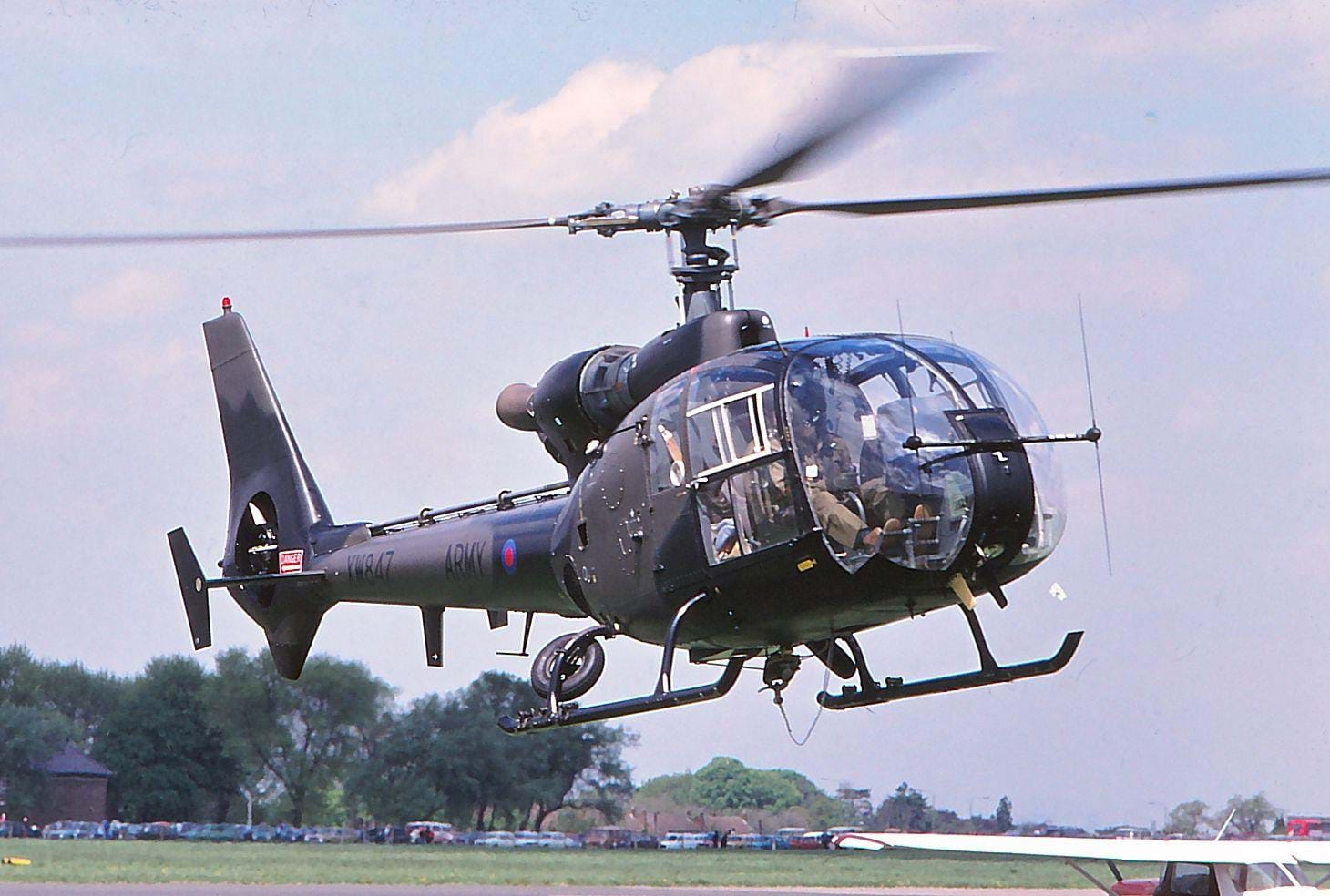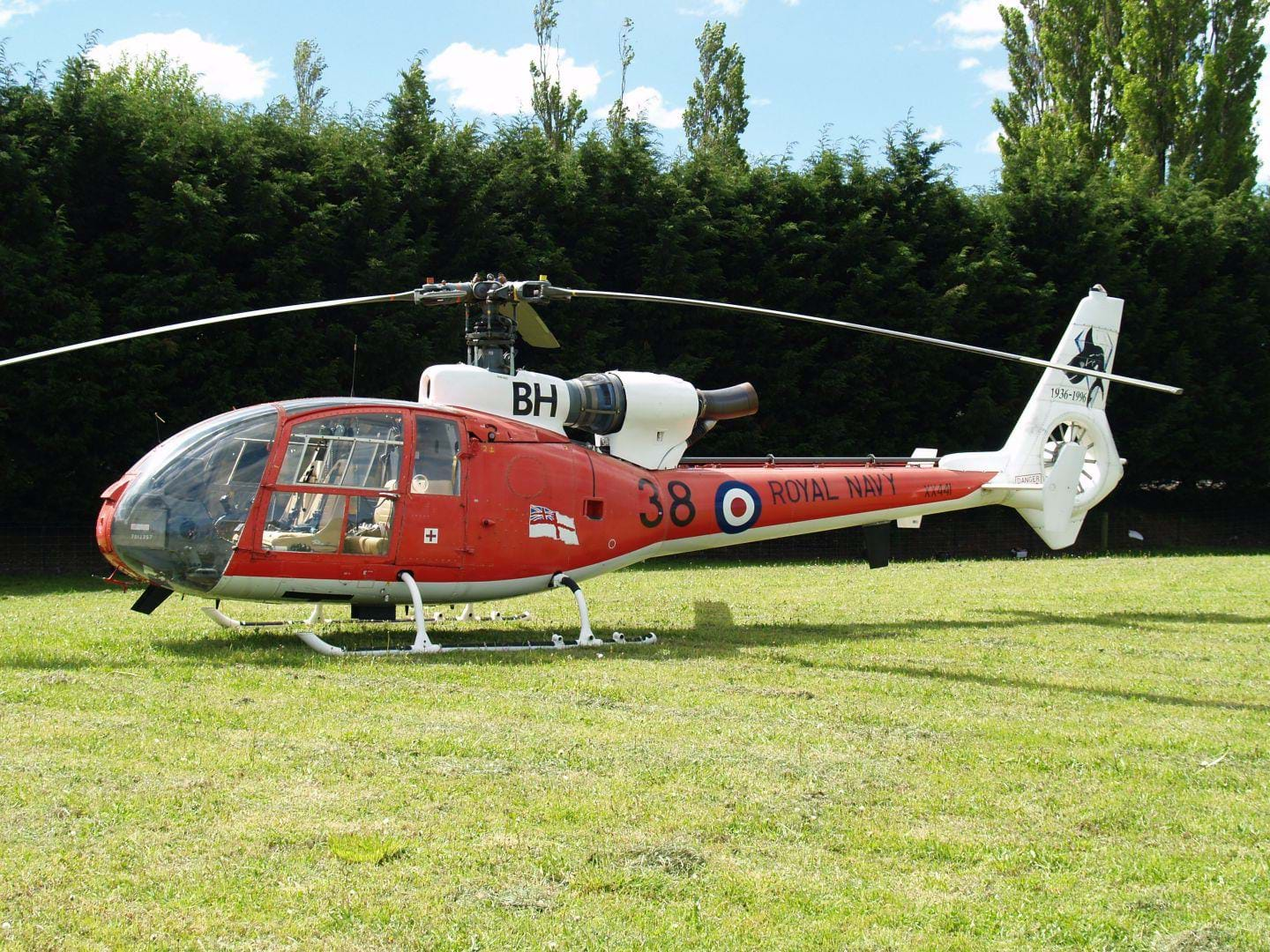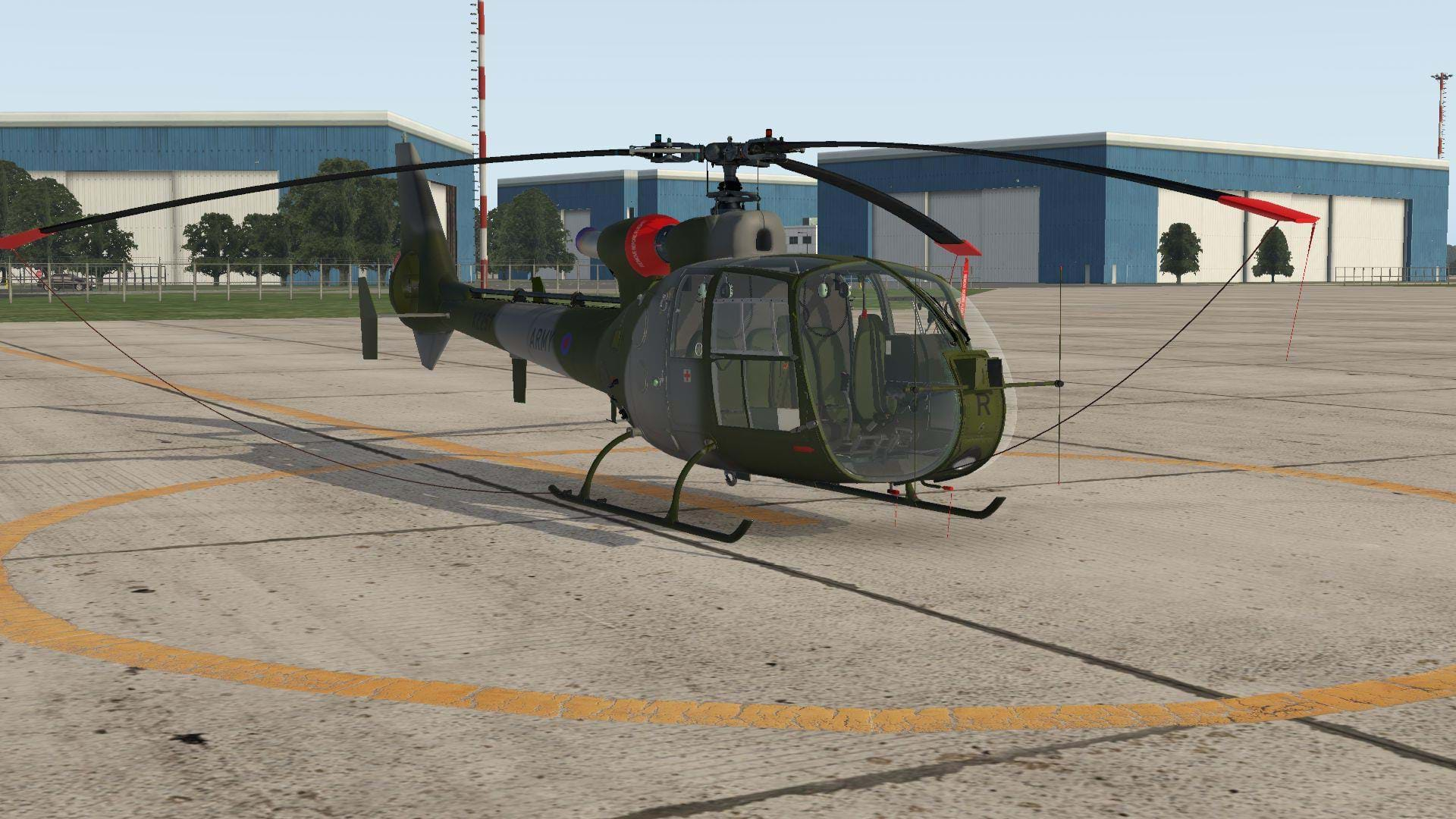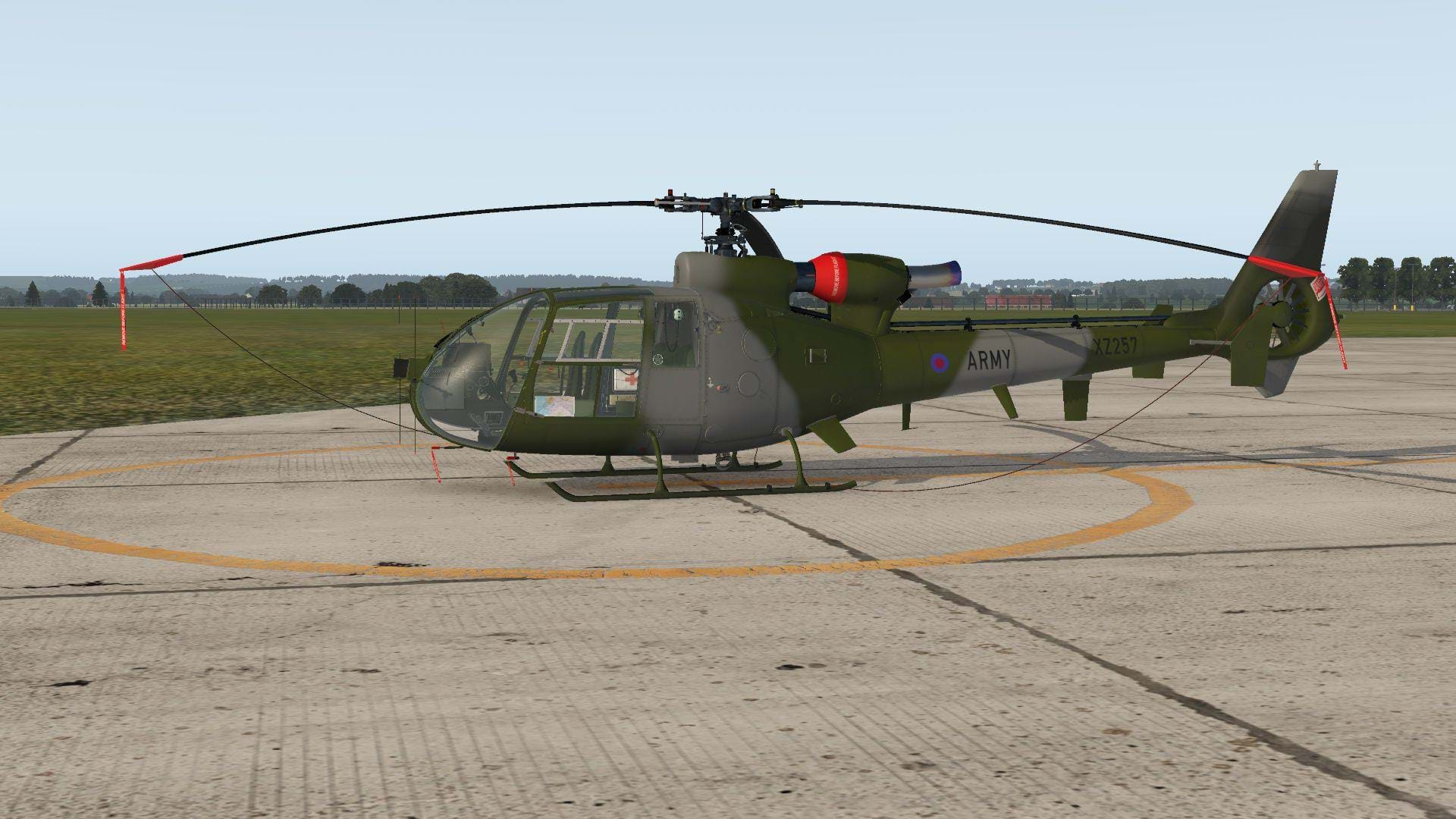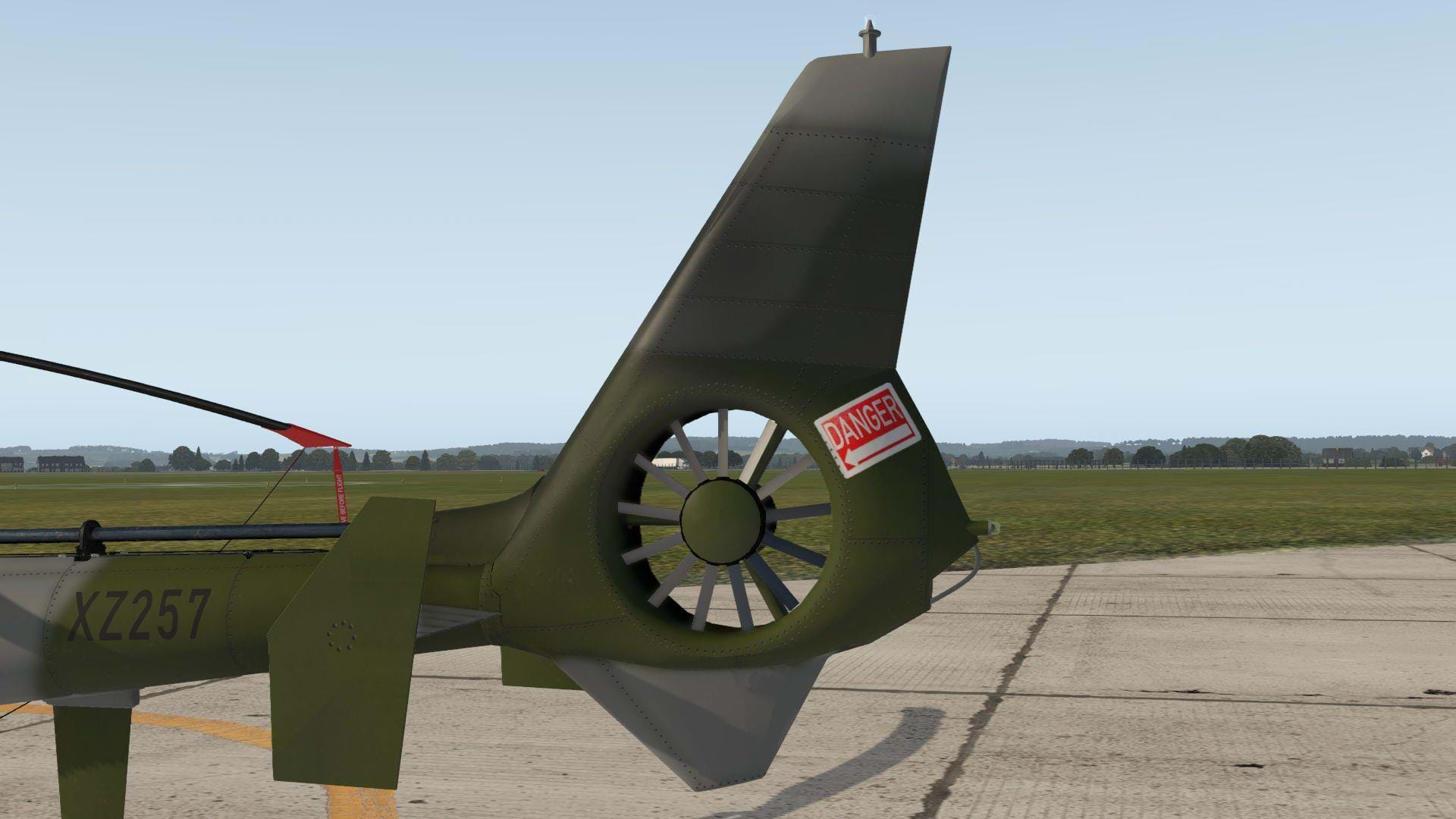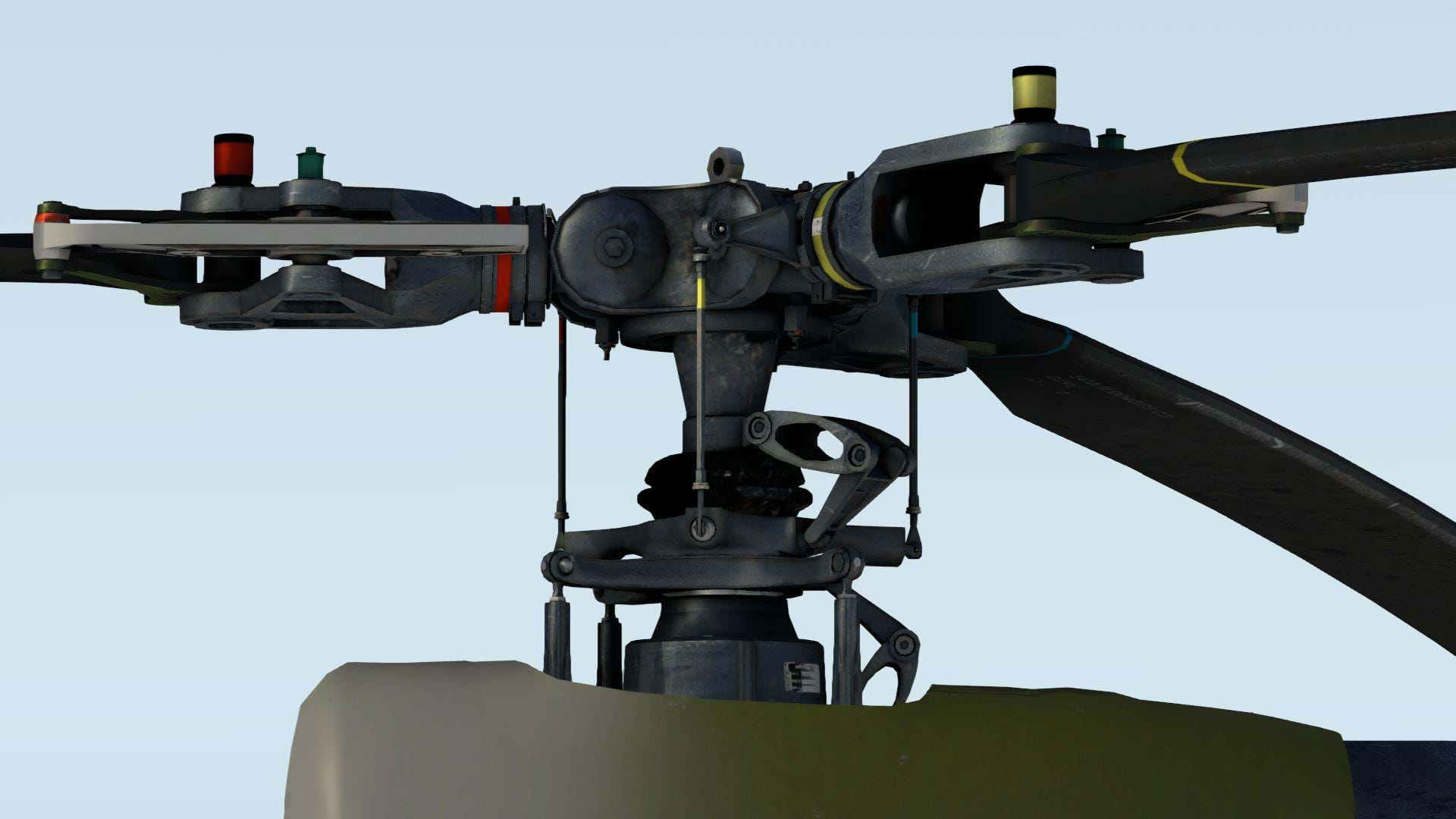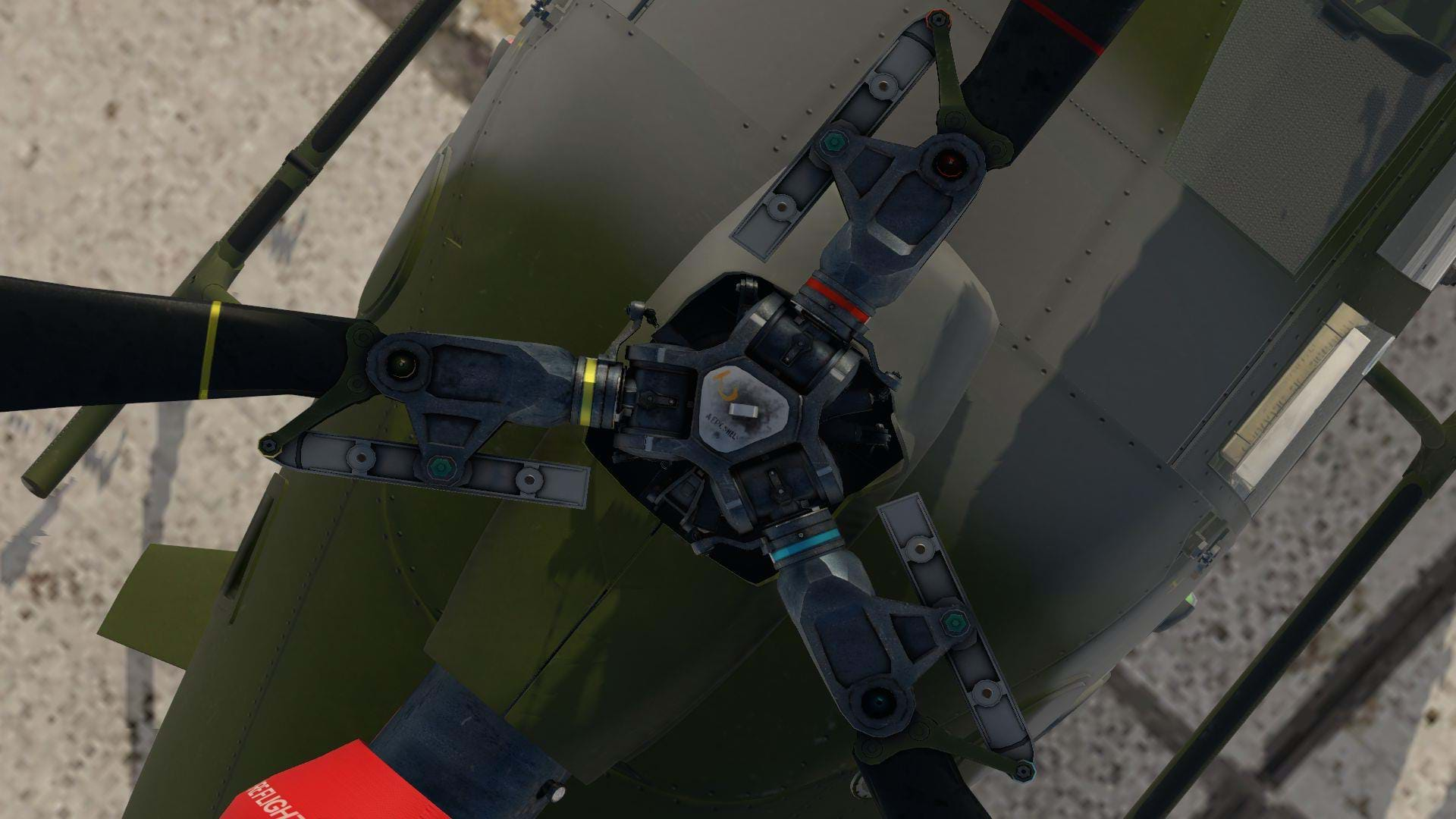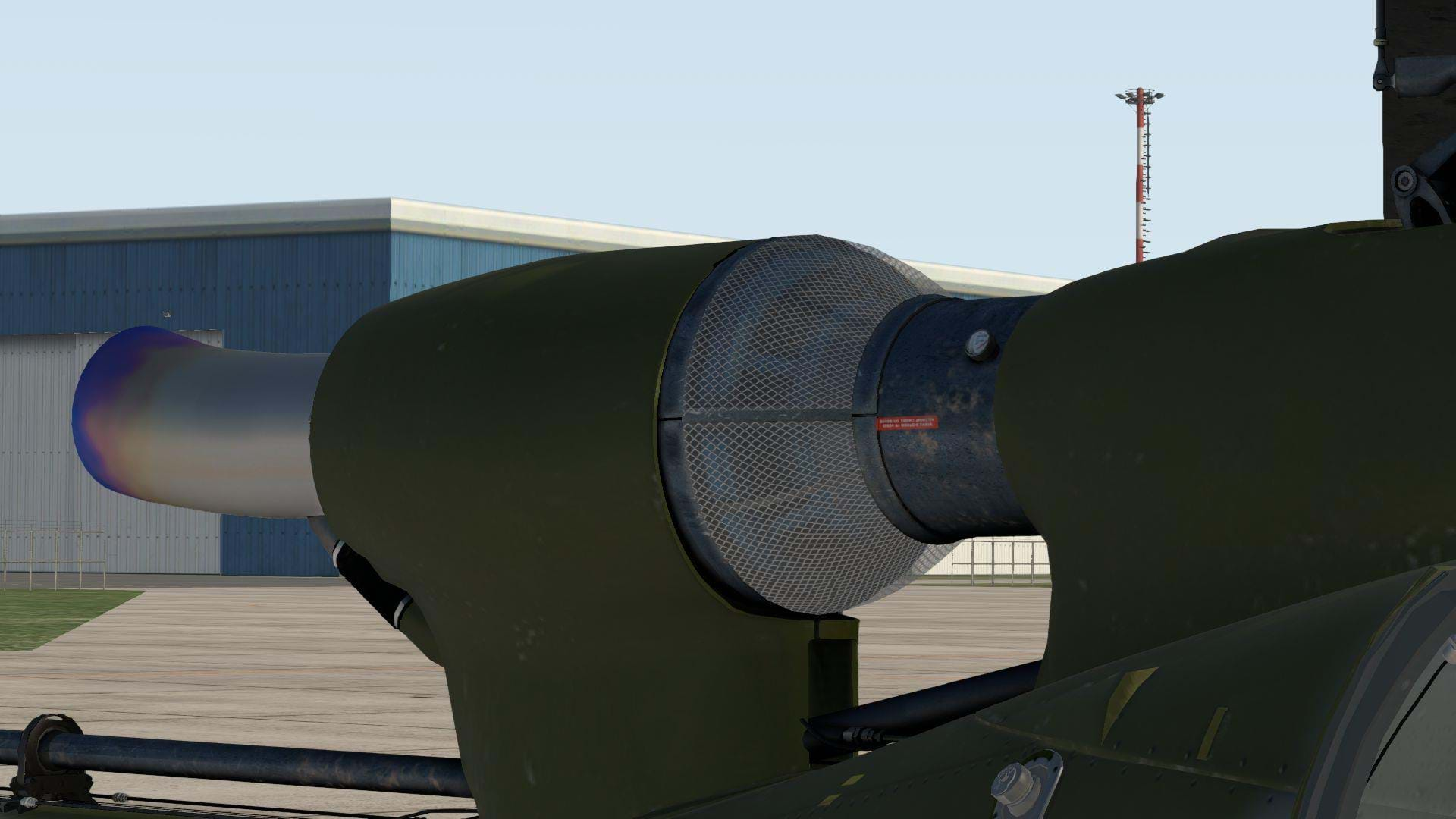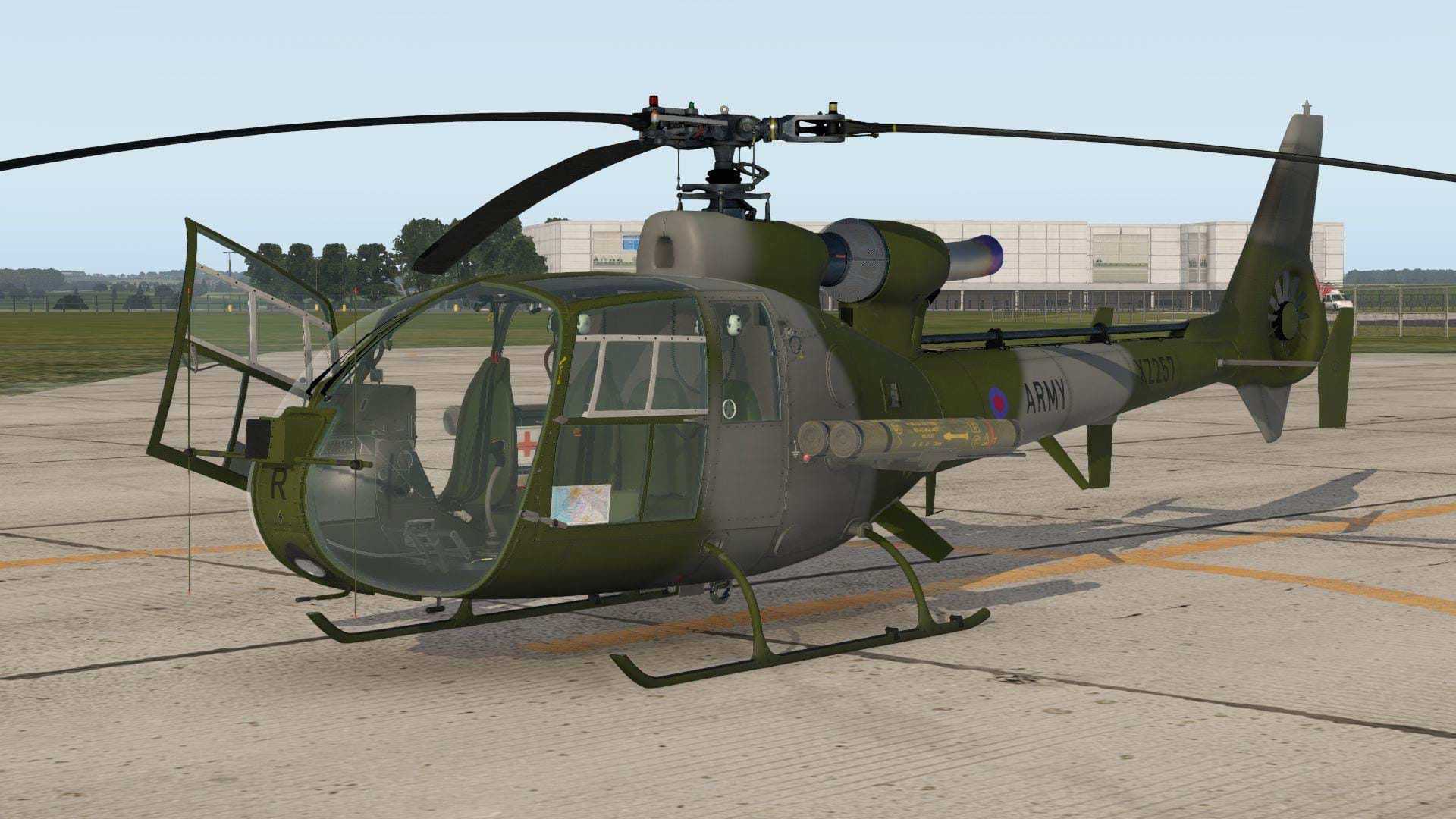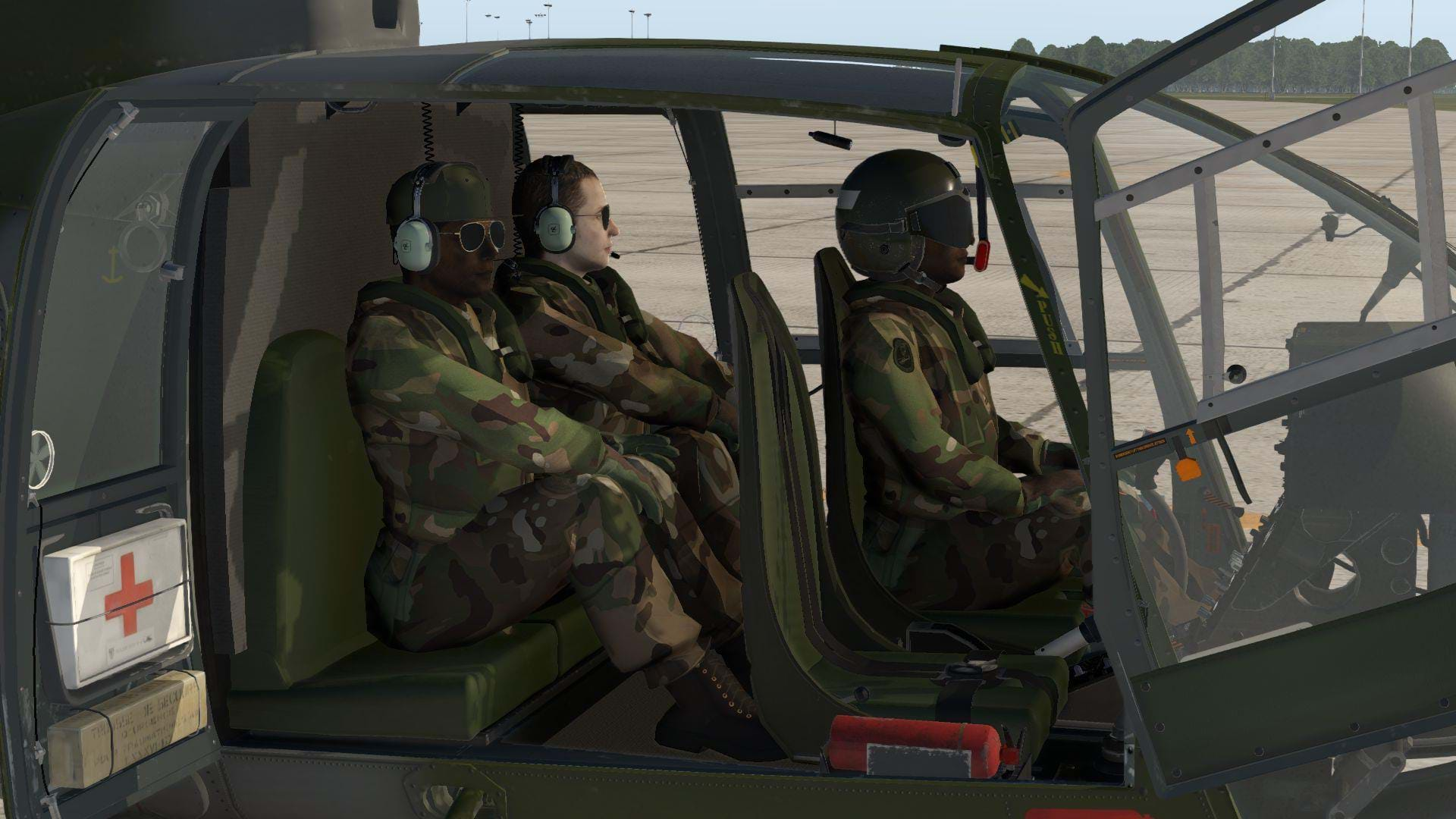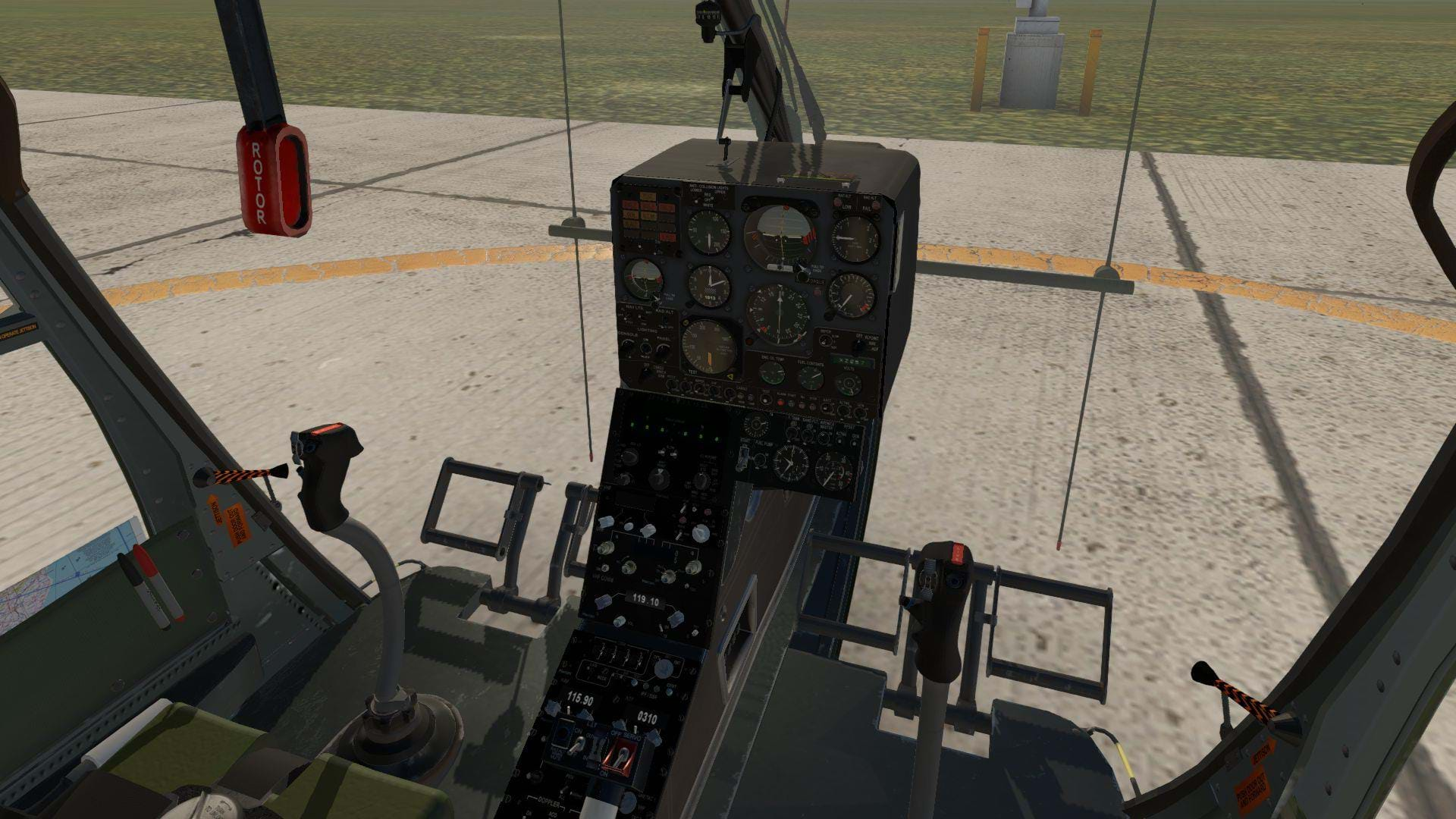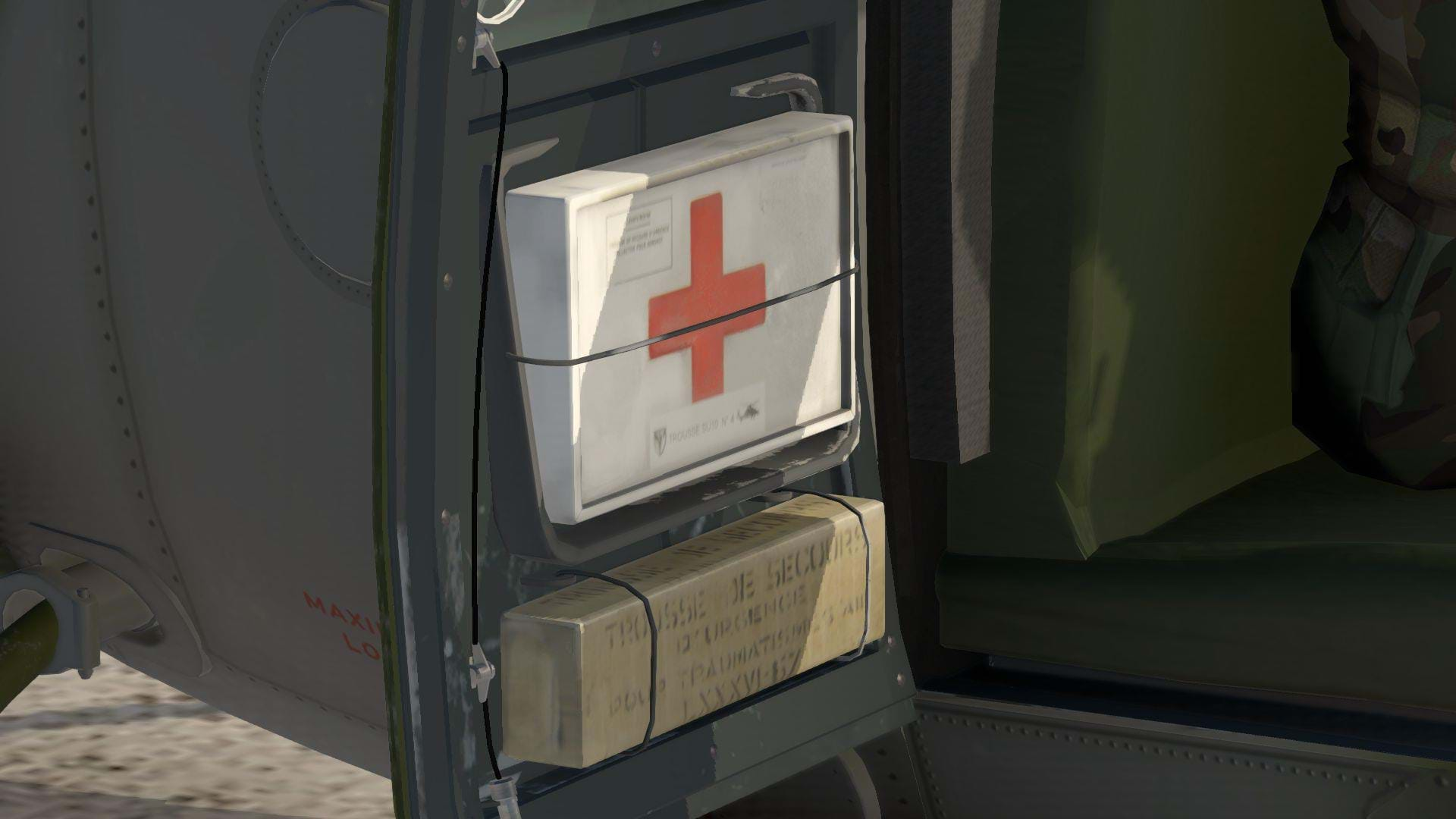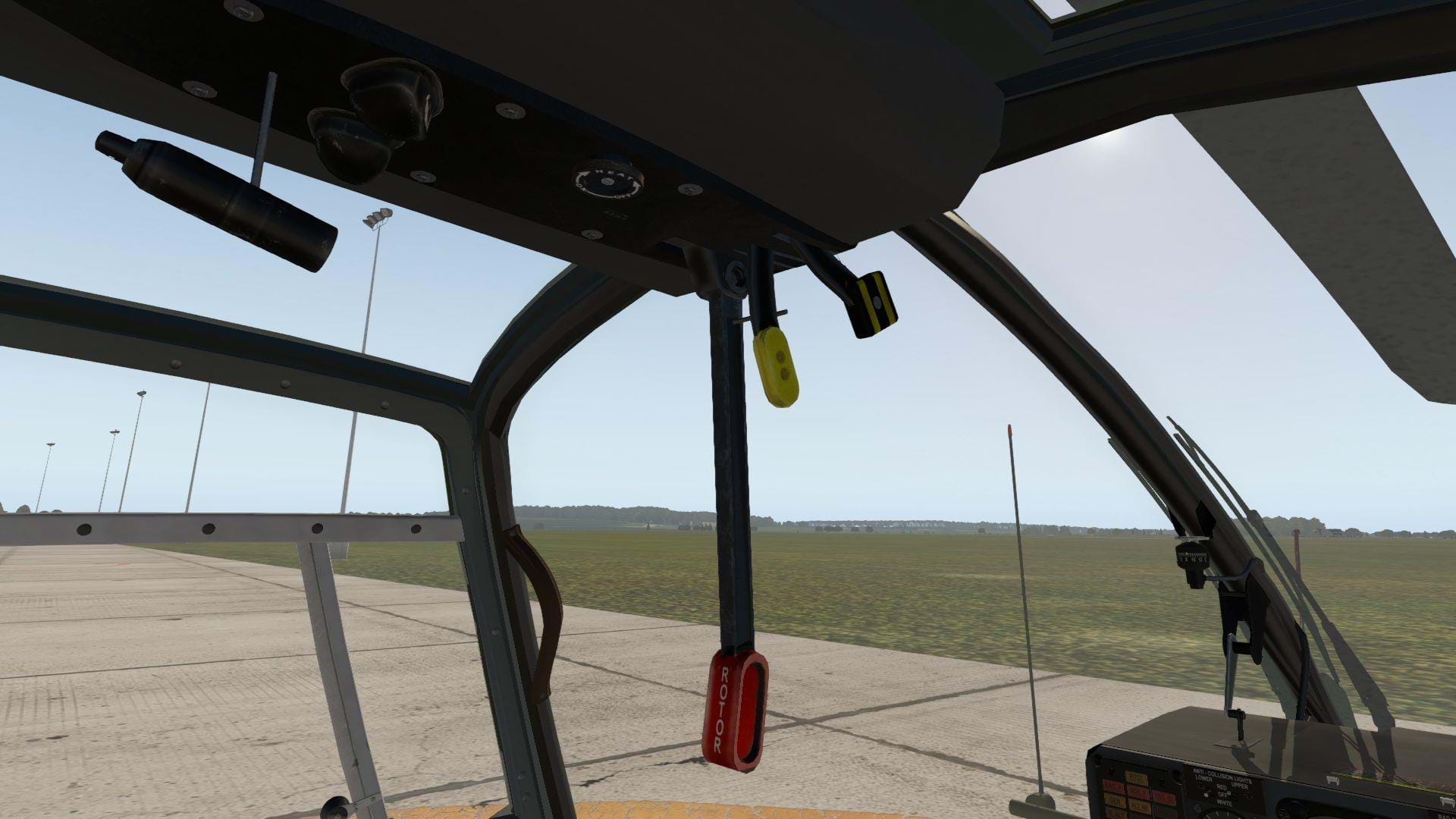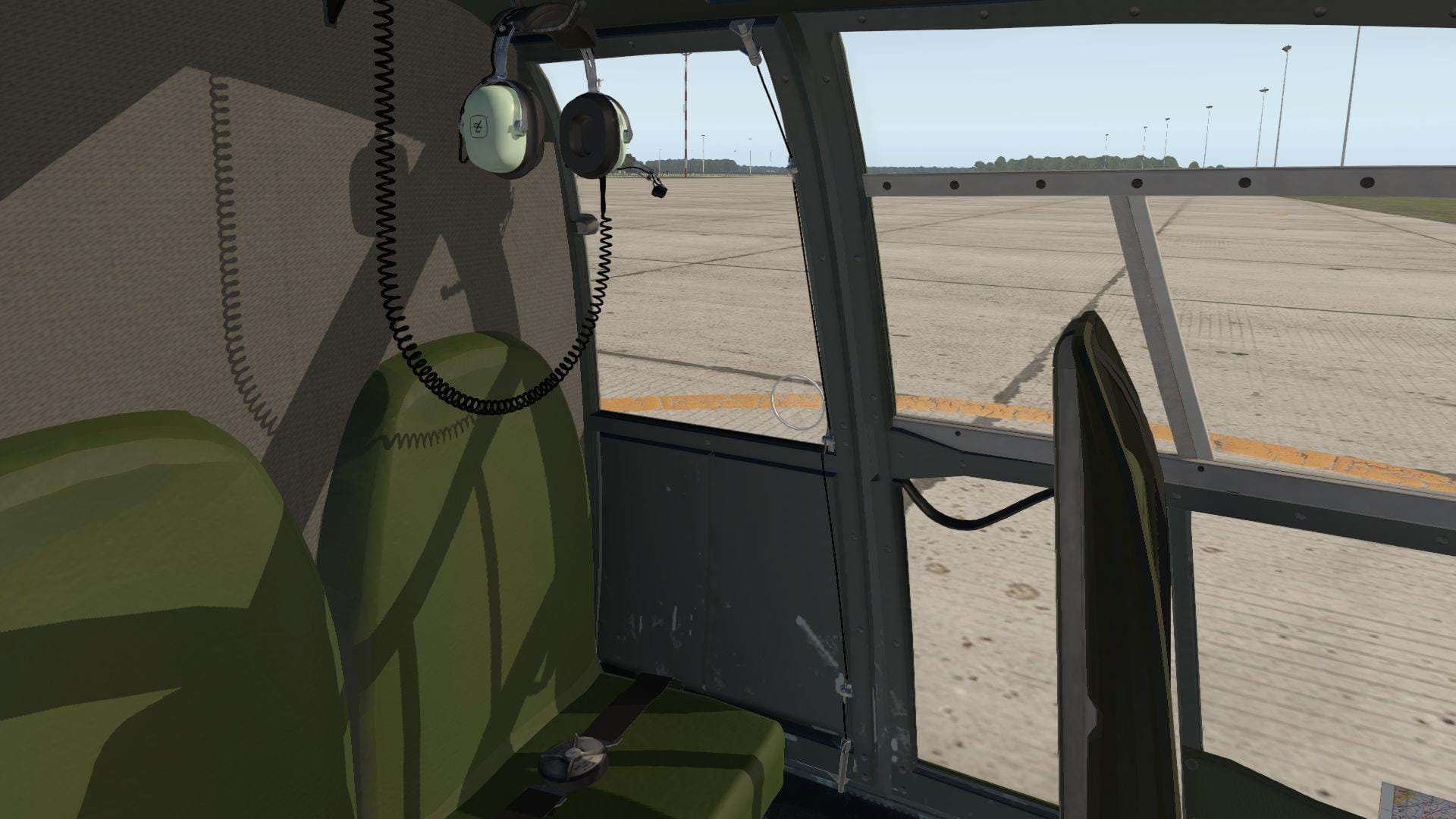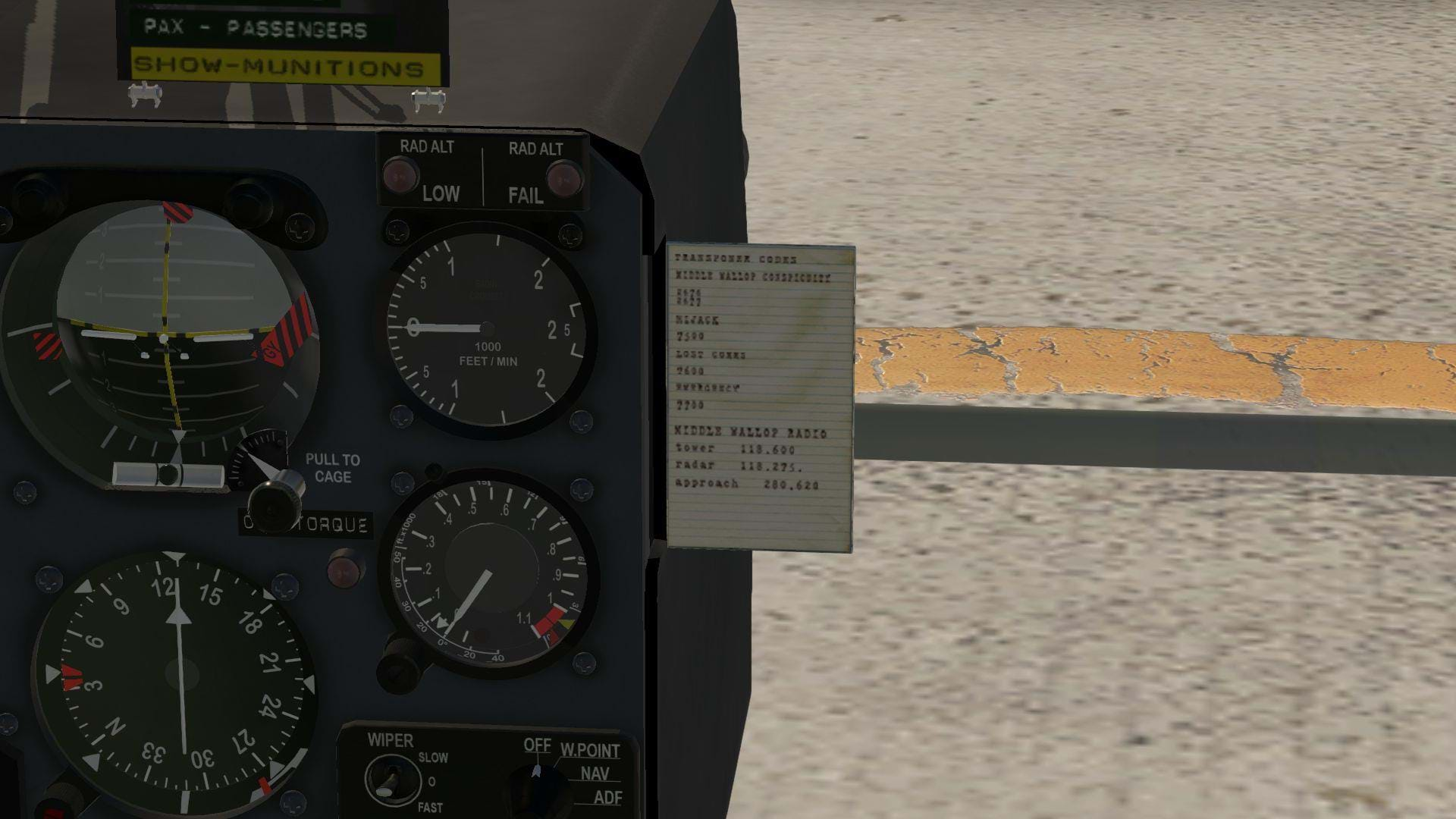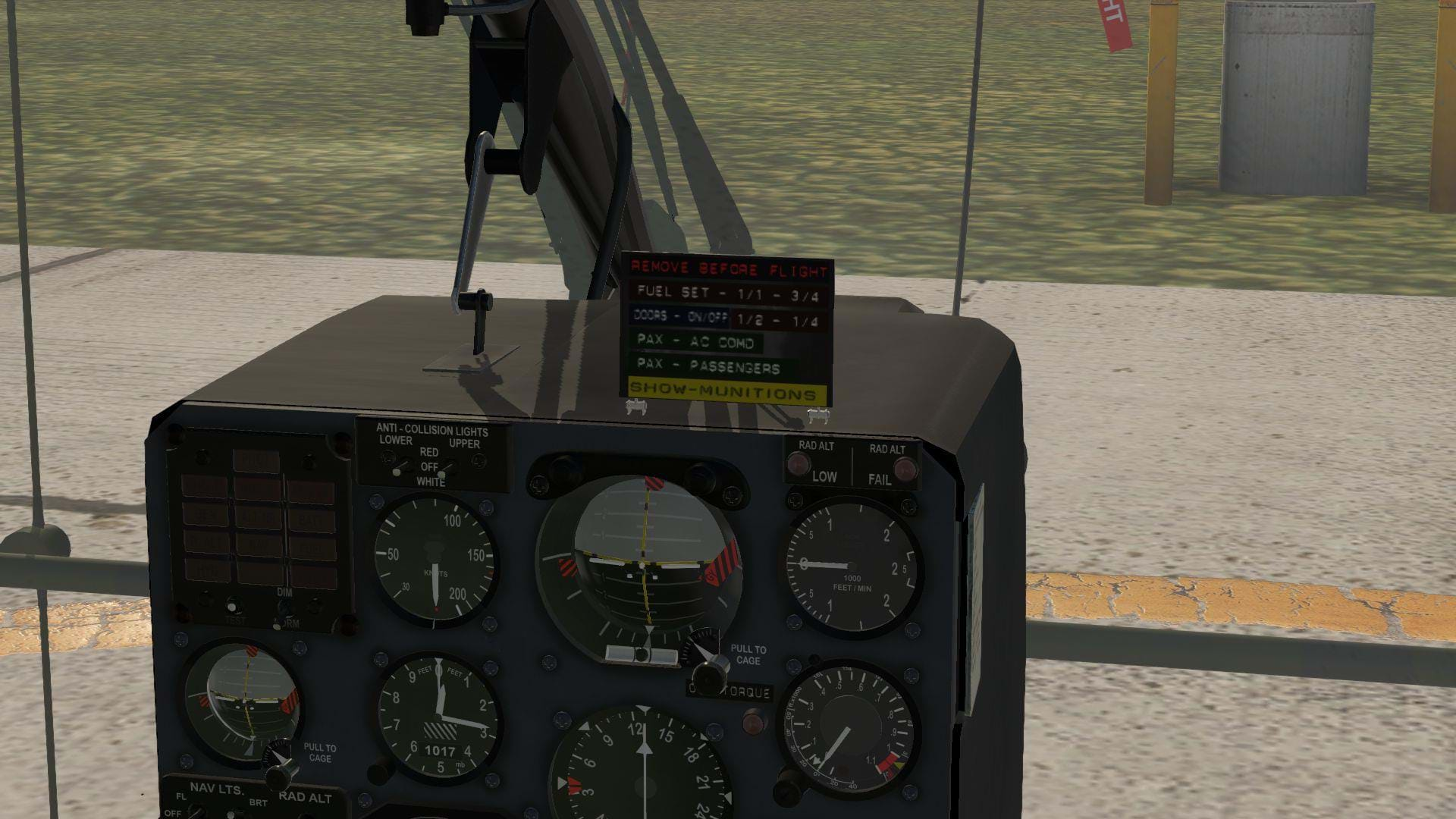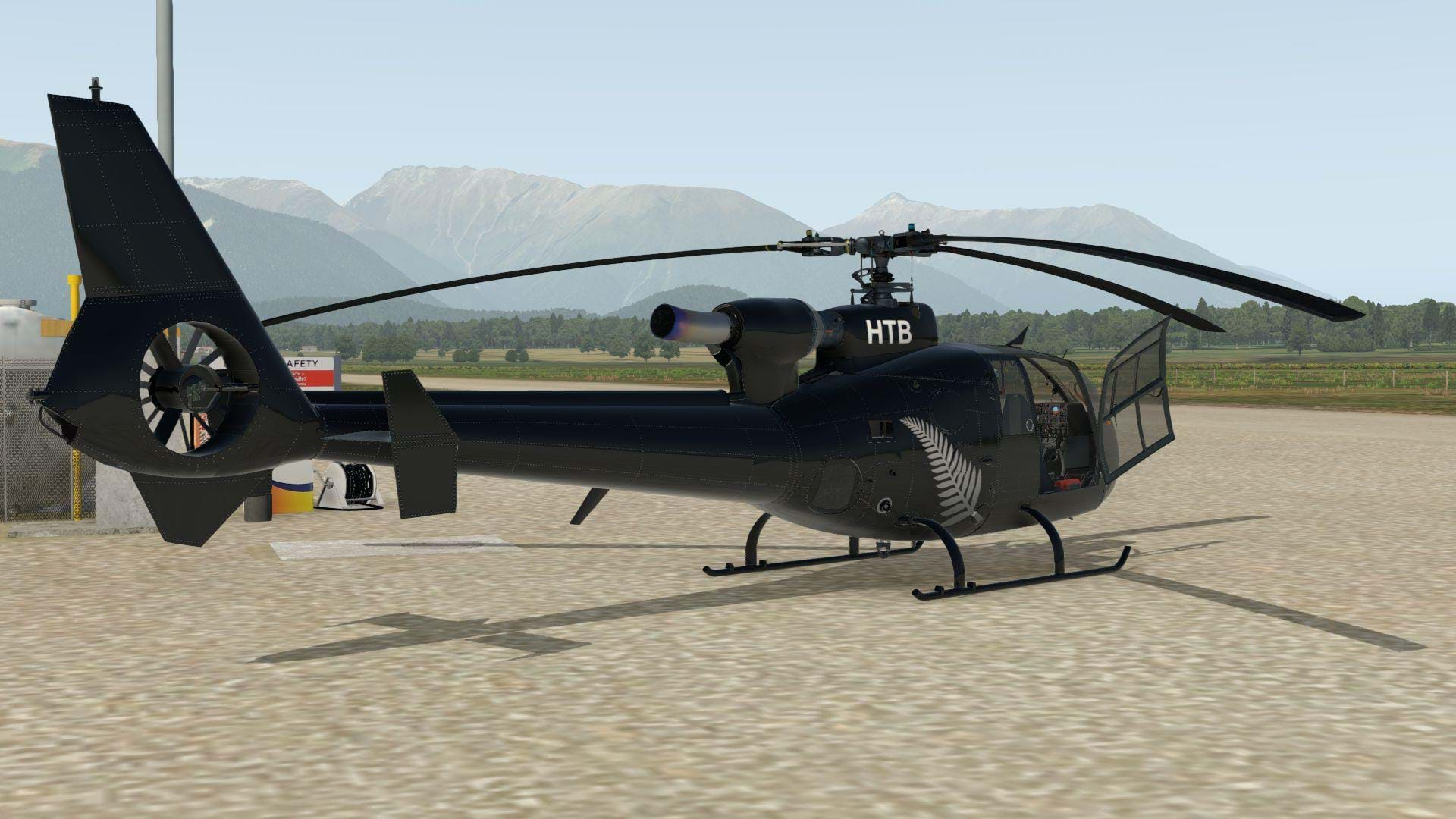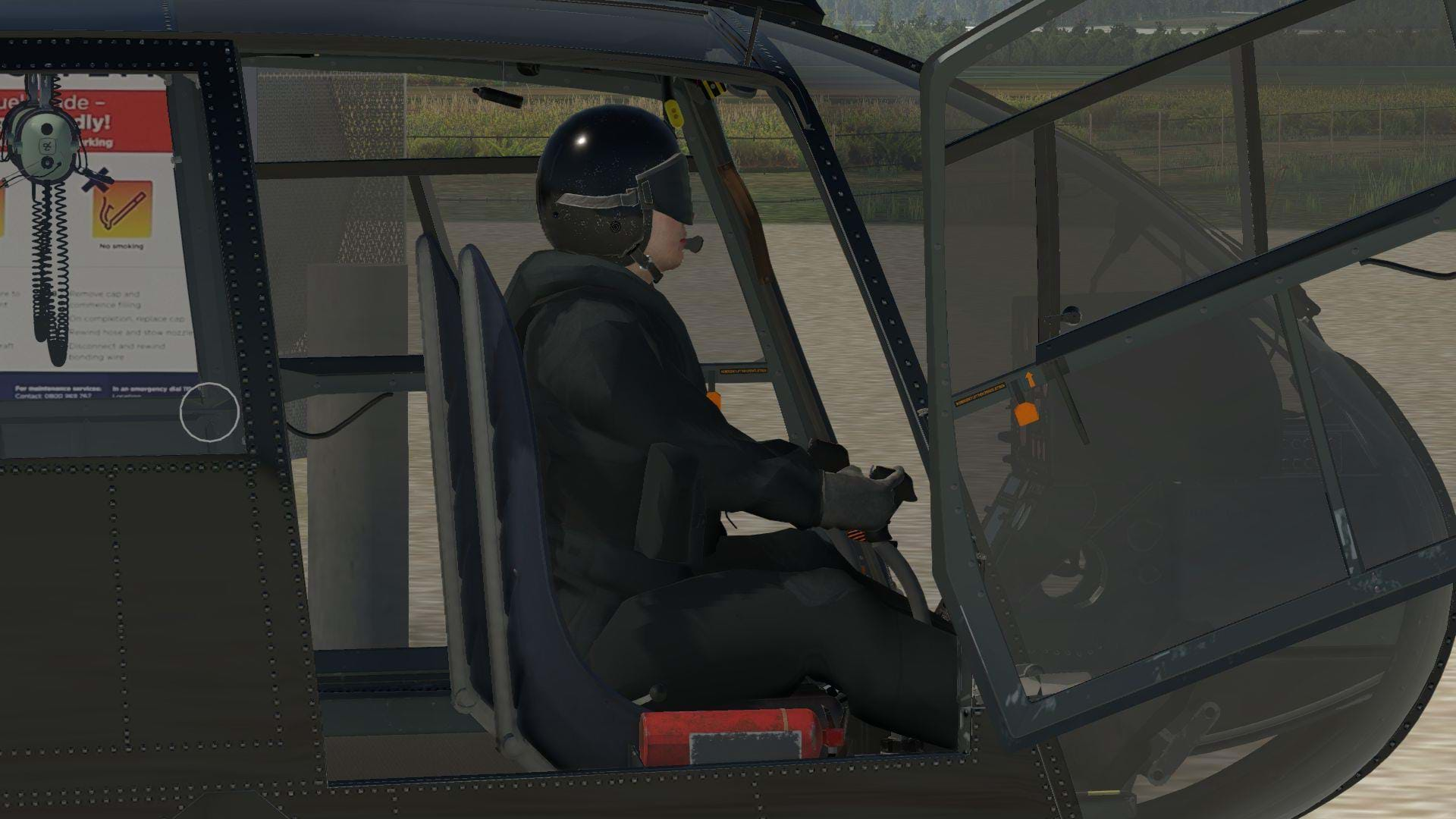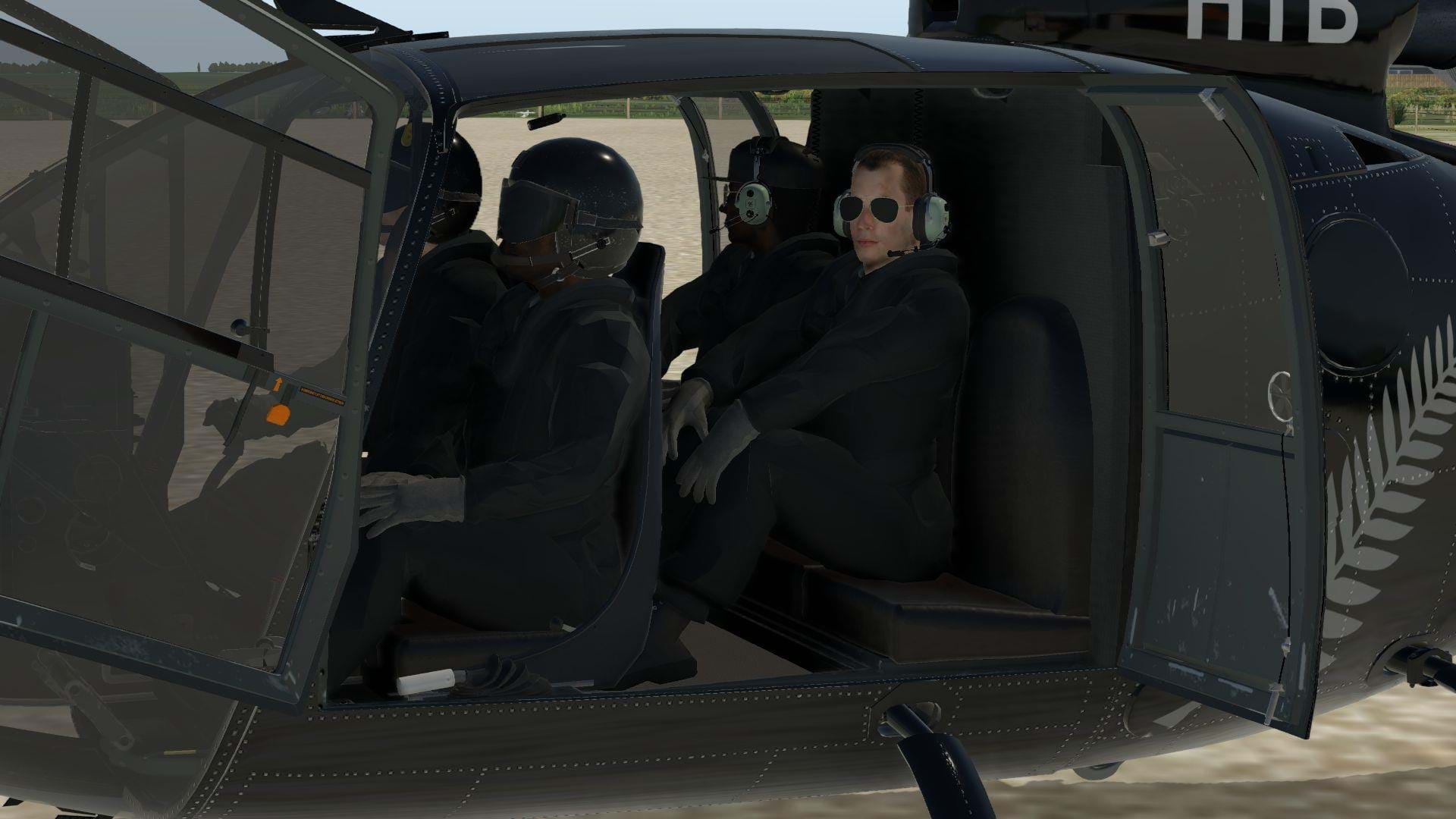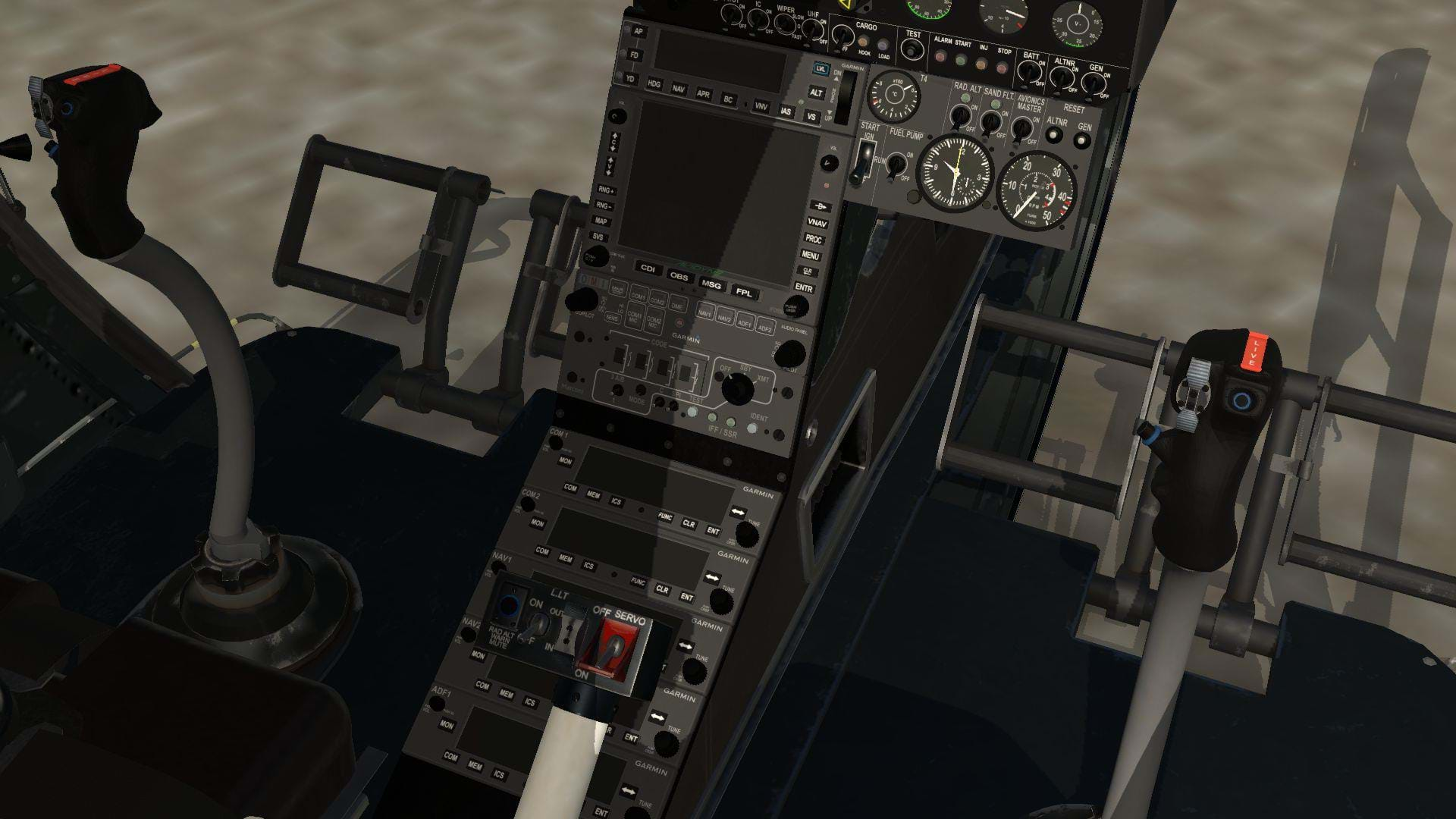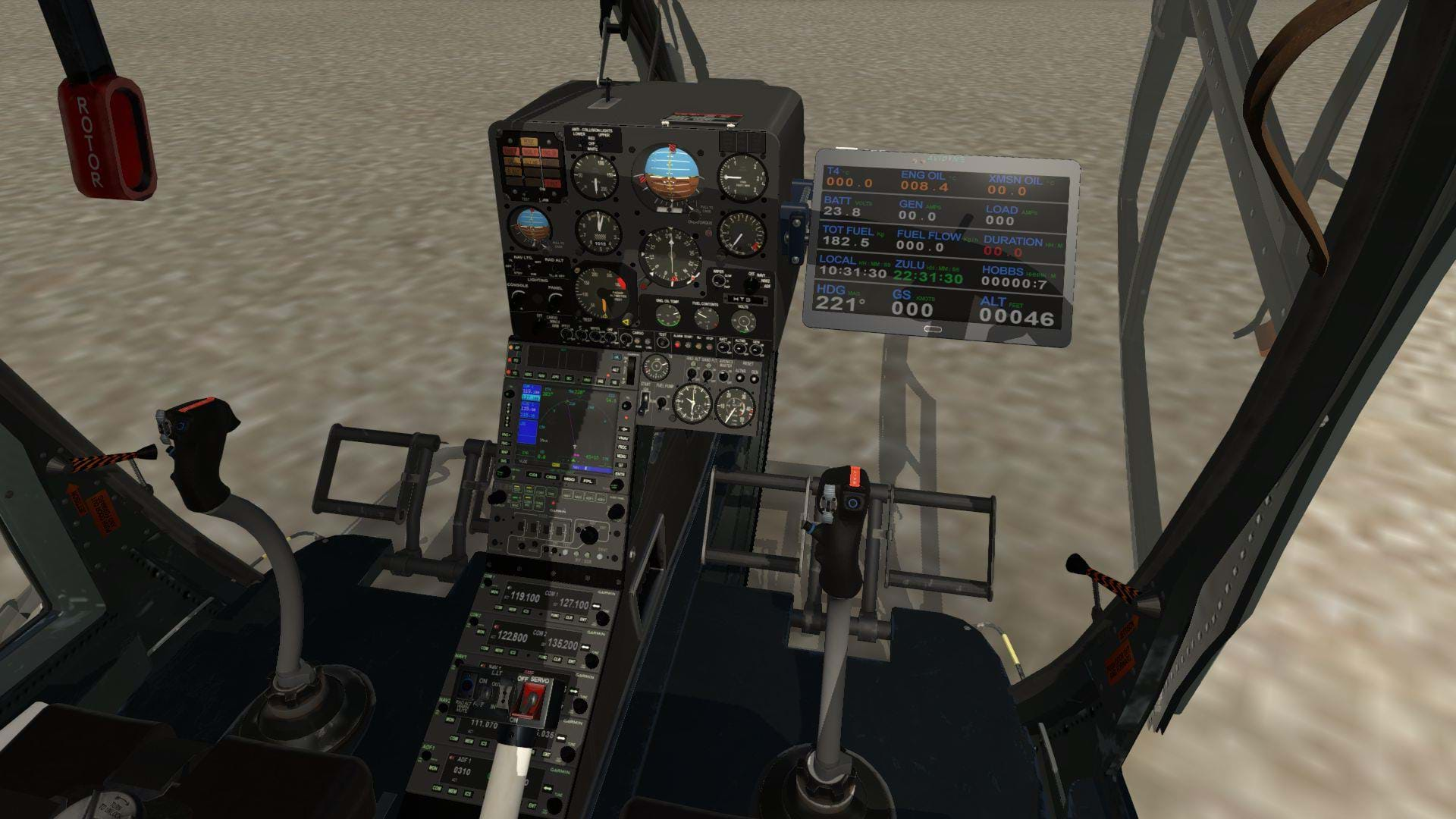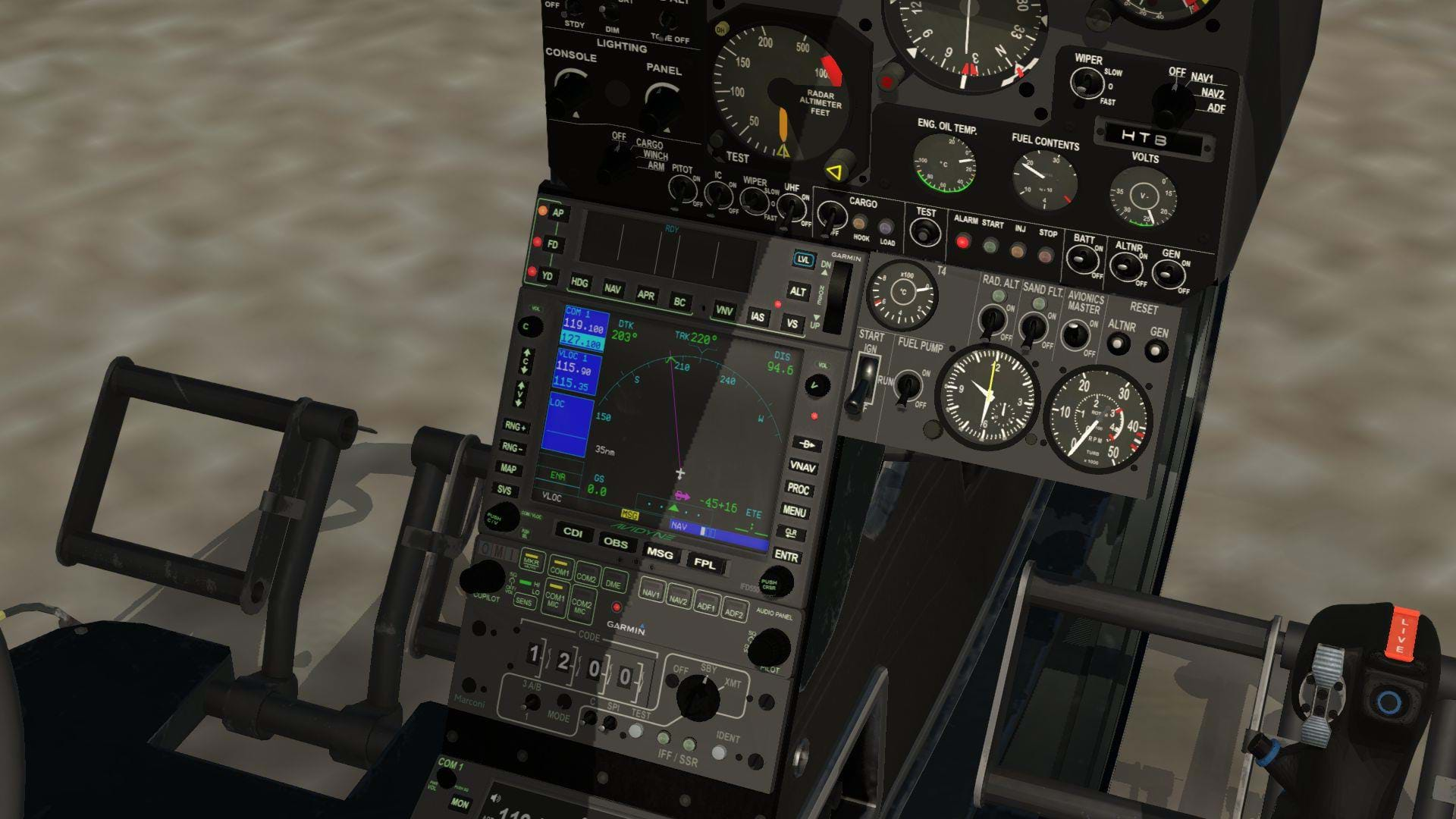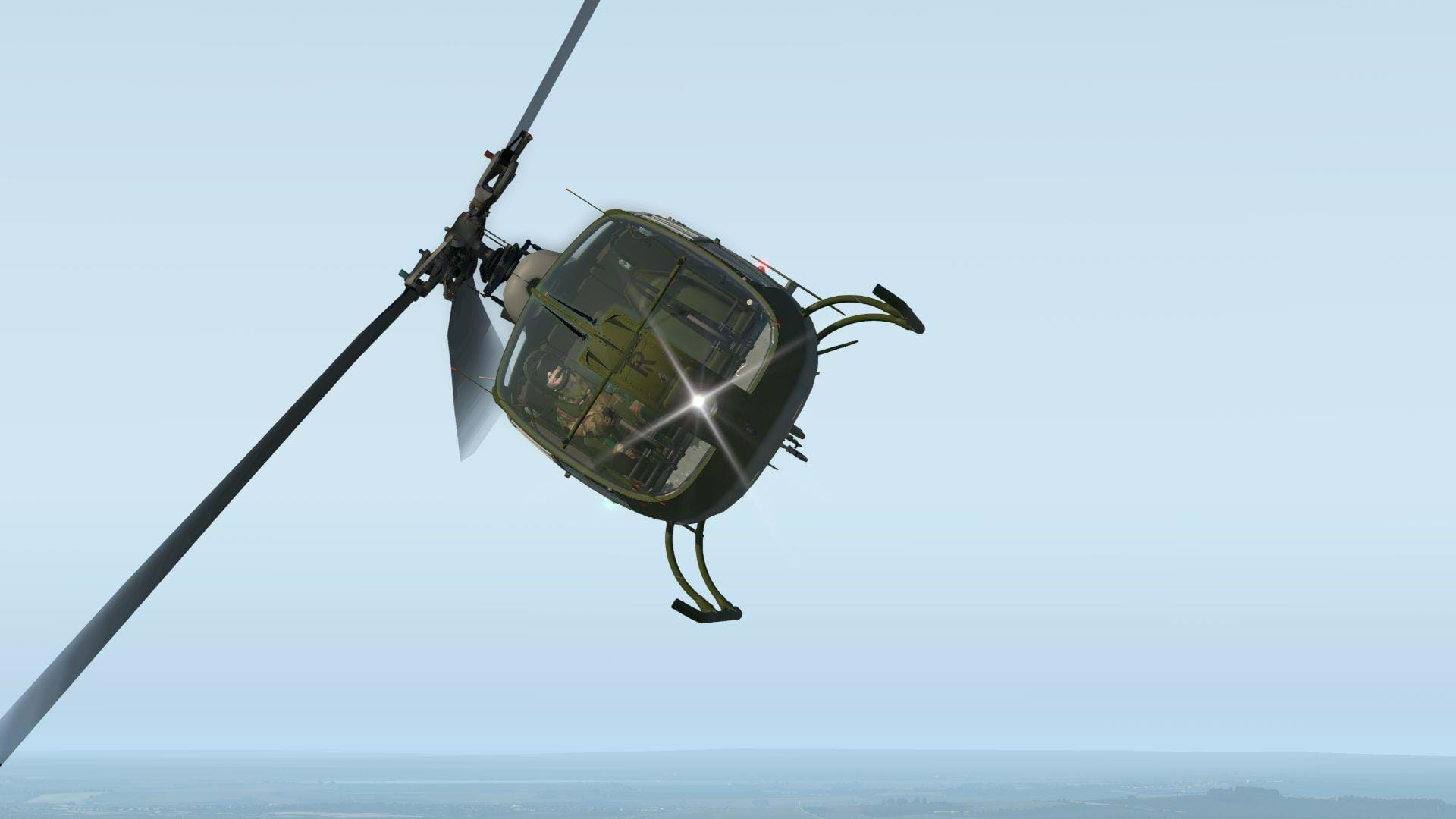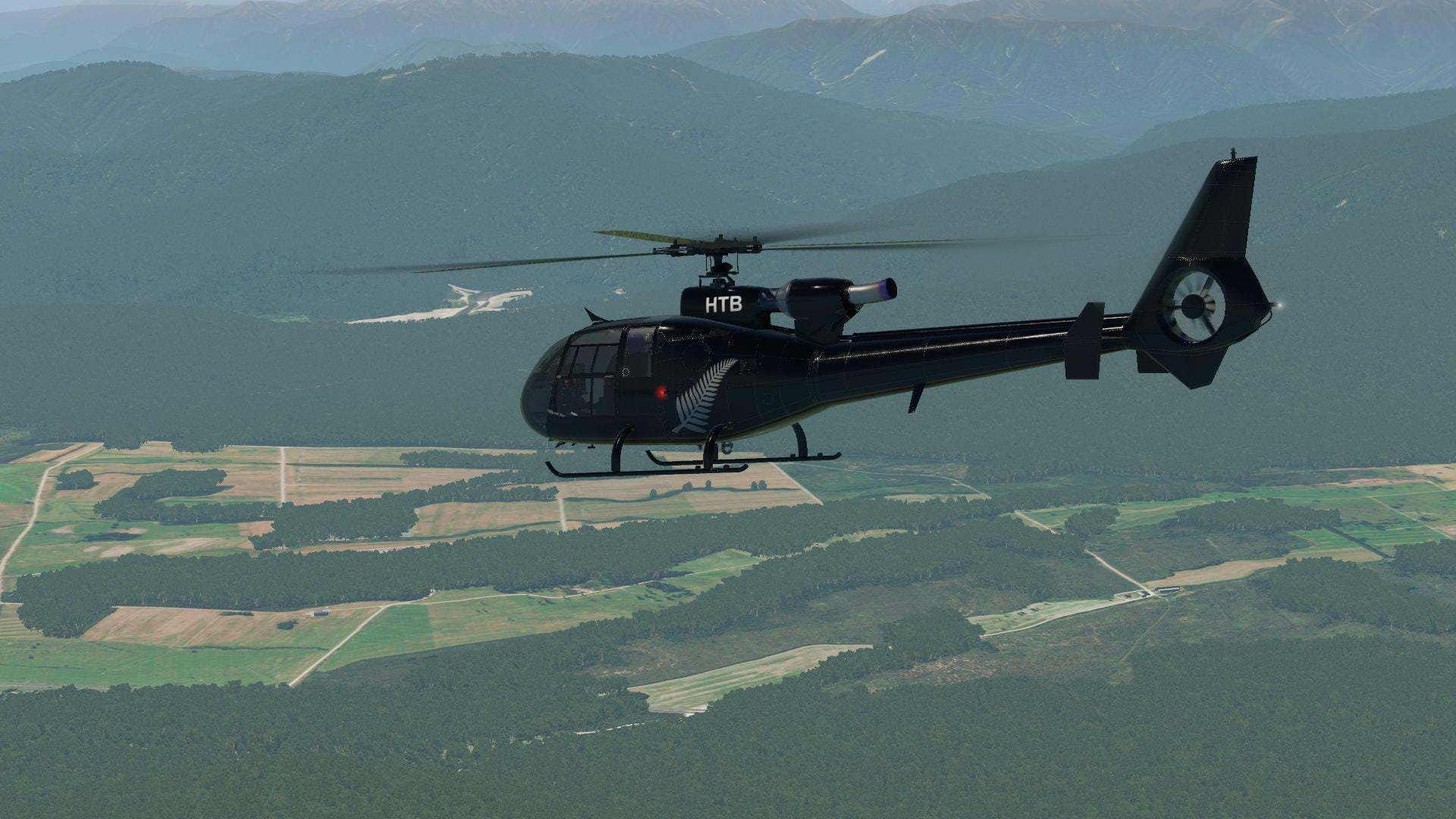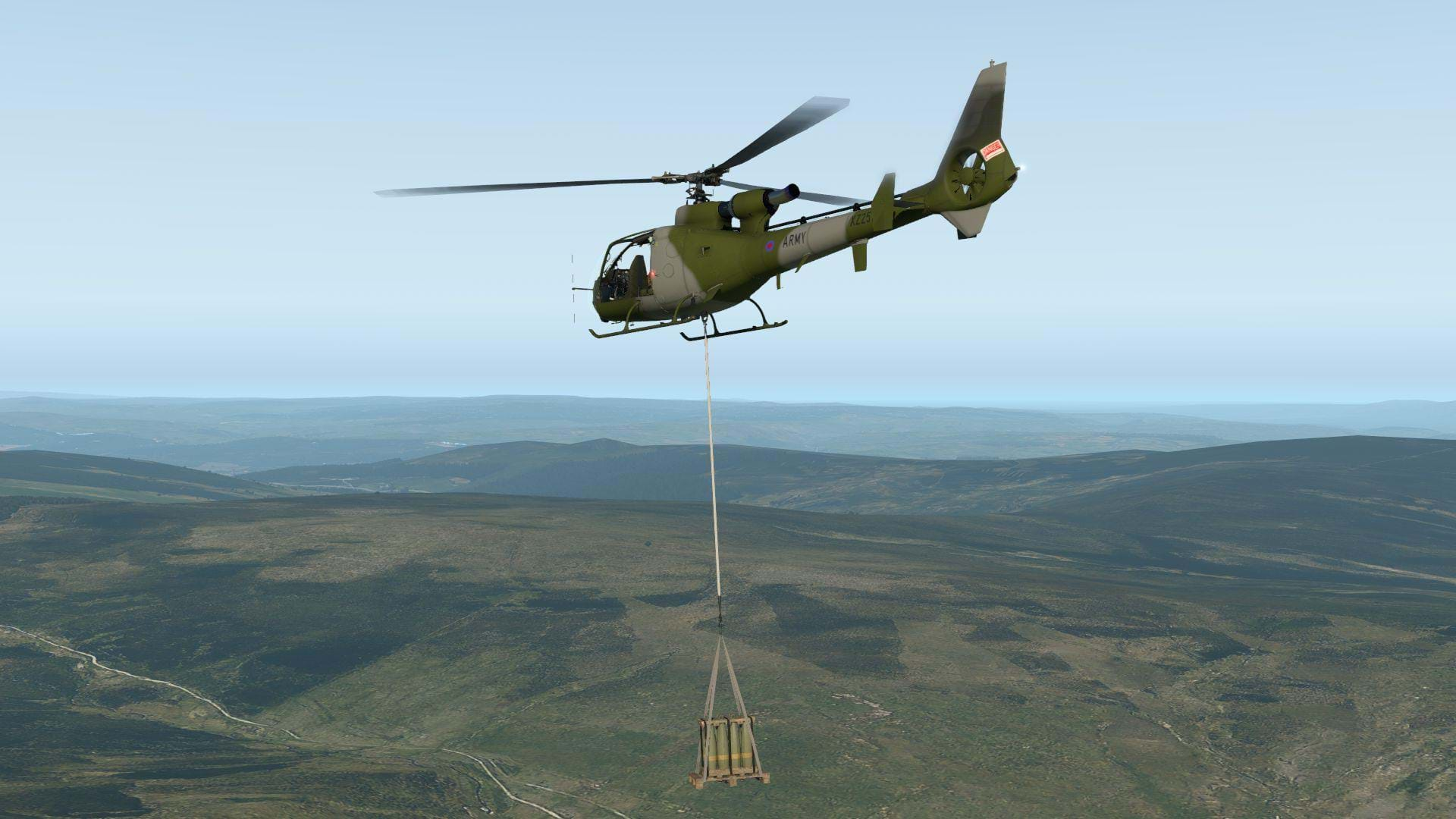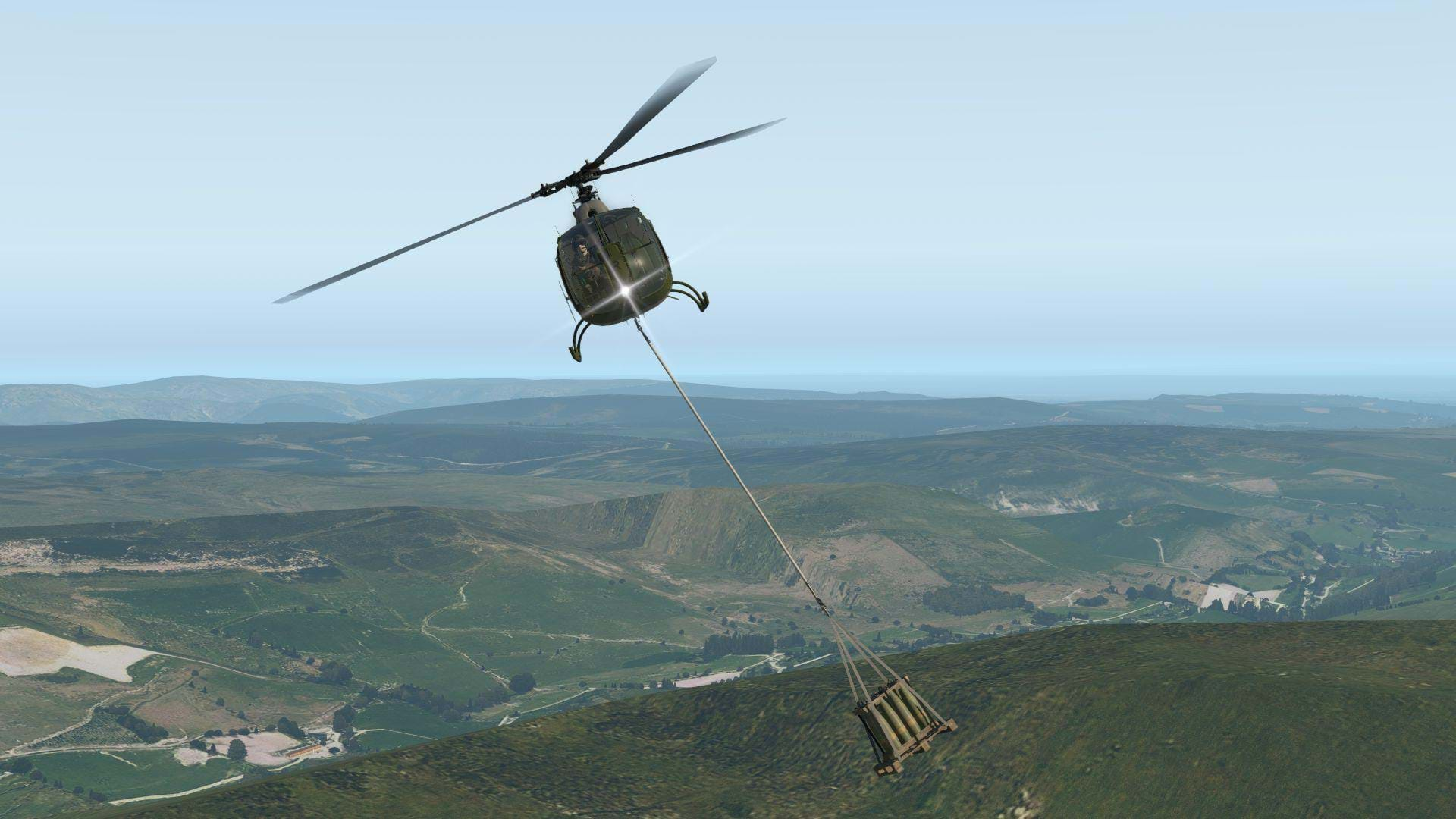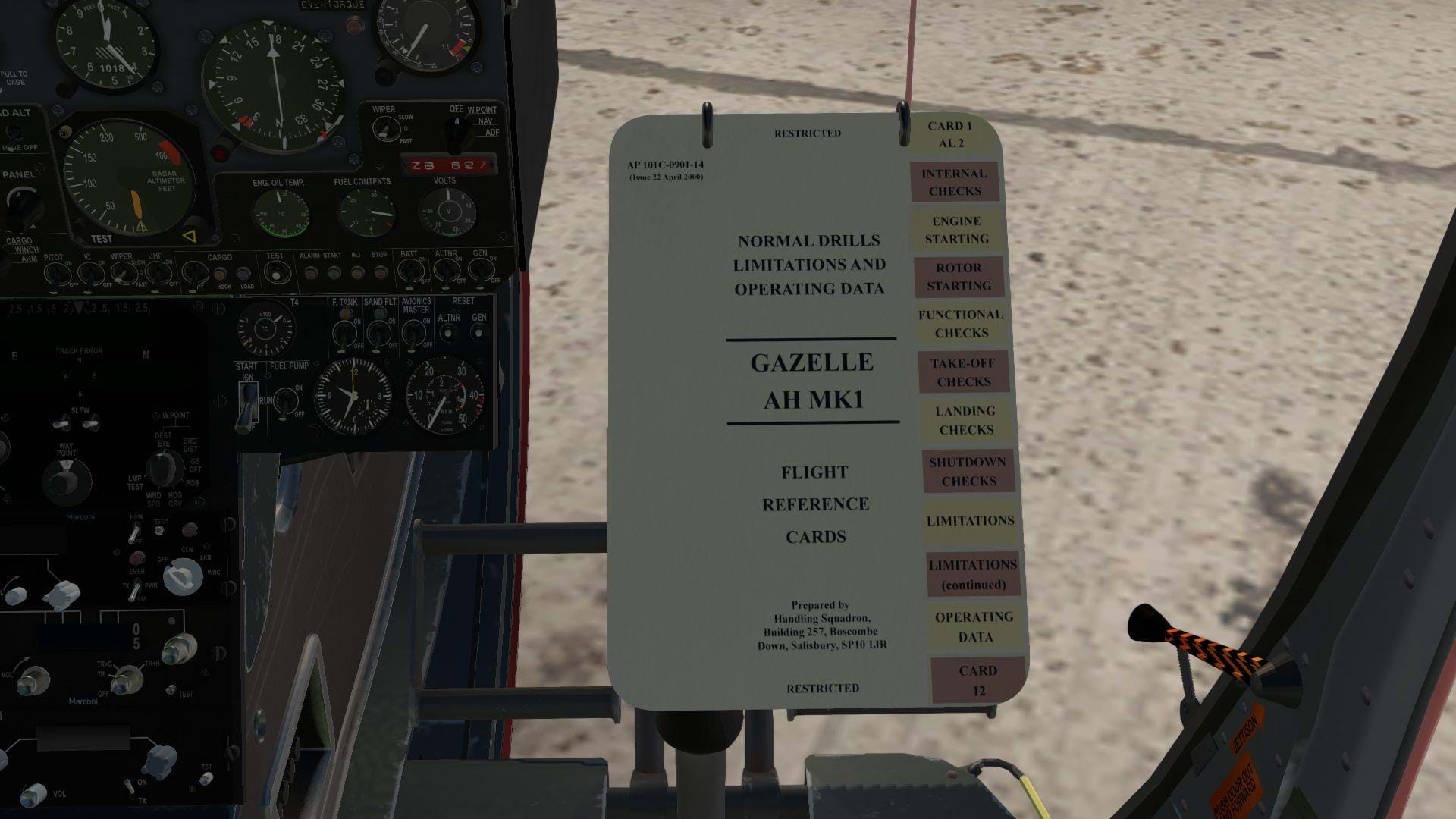Project History
The Gazelle is an aircraft that has captured the imagination of countless aviation enthusiasts and the public. Numerous appearances in TV and movies, most notably ‘Blue Thunder’ and large numbers used in military service in Europe meant that they aircraft was frequently on display.
This helicopter came about due to the increasing rate of helicopter technology of the day. The French were world leaders in rotary flight back then and building on the success of the Alouette series and a requirement from the French military to replace the Alouette III, the prototype SA340 ‘Gazelle’ flew for the first time in 1967 with Jean Boulet at the controls.
Originally, the aircraft was fitted with an Alouette tail rotor and drive train, 523shp Astazou II turboshaft and a rigid rotor head based on the MBB design used on the BO105.
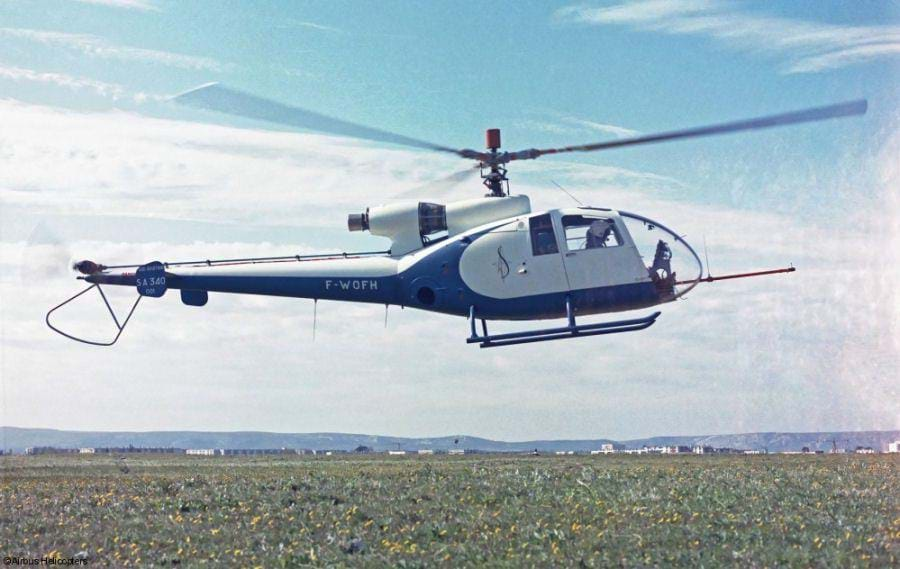 Prototype Gazelle in flight - Airbus Photo
Prototype Gazelle in flight - Airbus Photo
The second through fifth aircraft were re-designated the SA341 and were the first aircraft to feature the now distinctive ‘Fenestron’ tail. The Fenestron used a conventional drive system to turn a series of small fan blades within the tail itself.
The design made the system less susceptible to FOD strikes and while it used significantly more power in high anti-torque situations, the large fin made the aircraft very stable in cruise flight. In the event of a drive train failure, the fin was able to keep the aircraft fairly straight where the earlier Alouettes would’ve had to reduce power or enter autorotation to retain control.
At the time, the British were lagging somewhat in helicopter technology and the Gazelle attracted the attention of the British government under Harold Wilson. An agreement was reached in February 1967, before the prototype had even flown, to allow the British firm Westland to build nearly 300 Gazelles and nearly 50 Pumas under license.
The third SA341 built was refitted as a trials aircraft for the British Army and first flew in 1970. The initial British Gazelles were designated Westland Gazelle AH1s and featured an improved Astazou III engine and capability for various role equipment such as Night Sun and SNEB... which would’ve been quite a sight!
The British aircraft also featured a lengthened cabin from the first French production machine. Westland built Gazelles in four different versions for the army, fleet air arm and RAF and despite the type being 50 years old, Gazelles still equip some units.
Gazelle XW847. Biggin Hill, UK, 19-05-79. Dave Bates Photo
Of course, the French military were extensive users of the type. Nearly 300 341Fs and Ms were used by the ALAT. The Aerospatiale versions differed little from the Westland produced examples however, they saw more combat action due to the nature of Frances foreign policy during the 70s and 80s. Armed with cannon and HOT guided missiles, Gazelles under the Armée de la Terre served in Angola, Ivory Coast and Afghanistan.
Aside from ex-military aircraft being purchased for private use by civilians, the Gazelle also had a dedicated civilian version designated the SA341G. The G model first flew in 1972 and was almost identical to the military versions except for the avionics packages.
This civilian variant was the first helicopter to be certified for single pilot IFR in the United States. The G model was followed in the civilian world by the SA342J, an improved aircraft developed in tandem with the military 342L featured an 870shp Astazou XIV engine, an improved tail rotor and an increase in operating weight.
The Gazelle is loved by its pilots and operators for being easy and comfortable to fly. For a long while it was the fastest civilian helicopter thanks, largely, to the Fenestron tail. The Gazelle is still soldiering on with various air arms and civilian operators to this day.
Over 20 counties have had Gazelles in their military inventory at some time or another and Yugoslavia built the aircraft under license much as the British had done.
Sud Aviation has been swallowed up by various companies and is now part of the Airbus family. Unfortunately for Gazelle lovers and operators, the supply of parts and more importantly, support is drying up and the time will come soon where the type is just too difficult to operate commercially.
Much like the Alouette before it, the Gazelle has simply become too old to be commercially viable and the types future is largely in the hands of private operators around the world. Those involved with the original design of the Gazelle can look back with pride at more than 50 years of sterling service.
ZK-HBH ex Royal Navy SA341. West Melton, NZ, 23-10-07. - Dave Bates Photo
The JRX SA341 / 342 Gazelle
Full Disclosure: I was part of the test team of this project. Although I have lived with this model over the last few months much as the developer has, I will be reviewing this aircraft to the same standard as any other payware model.
The JRX Gazelle is the first payware product from the now, well known developer of the freeware Bell 206. JRX has featured the SA341 in full military fit and the SA342 in full civilian fit. The addon features 17 different colour schemes for the military version and 19 for the civilian one.
Download and Installation
The package is available from the x-plane.org store in one compressed file. The compressed size is 1.7gb so it’s not exactly a small download however as you will see, there is a lot in that file. Installed into ‘Extra Aircraft’ the two folders (one per version) equates to just over 4.4gb.
Model and Textures
First impressions of the 341 in the sim are good. The model is crisp, clean and accurate. Upon loading in the sim, the aircraft is at rest with flags and blanks in place. This is a really welcome addition that I wish more developers included.
The remove before flight tags also move with the wind and the pilot model is not present when the aircraft is in this state. The Fenestron and rotor system are exquisitely modelled and textured and it looks pretty damn terrific.
There are lots of little details all over the aircraft to keep the purists among us happy. All of the aerials and ports are present, the blades droop nicely at rest and it really does look like the real thing.
The drive train on the military 341s is exposed and you can watch this spin with the engine driving the system on the JRX one. About the only thing that is lacking, and it’s not really a big issue, is that the various moving parts don’t move with the flight controls. Honestly though, it’s such a minor thing that it’s almost not worth mentioning.
The little fold up placard on the instrument panel (more on this later) allows you to add weapons in the form of missiles. These aren’t functional but if you’re roaring around in a forward area then they look the part.
The pilot model appears when power is supplied to the bus. Dressed in what looks like a form of DPM and wearing a helmet, he looks the part. In addition, you can select from the aforementioned placard, an Aircraft Commander in the left seat, and/or passengers for the rear. In the military context, these look great.
Moving inside the aircraft, it becomes quite clear that the developer knew something about this machine. I can almost smell the sweat stained seats, oil and hydraulic fluid. There is a lot of atmosphere in there.
The office has the feel of a working aircraft. Lots of equipment and sort of claustrophobic in feeling but at the same time, excellent visibility and functionality. Little details like the Dymo made serial numbers specific to each aircraft are a really nice touch.
On top of the panel, there is the fold up placard. This probably had some limitations or performance charts on it in the real aircraft, but the developer has chosen to make this the loading panel. Pre-set fuel loadings (Full, ¾, ½, ¼) AC commander and/or passengers, Tiedown removal, Weapons and Door removal. A very elegant solution to an often neglected aspect of sim aircraft.
Moving to the civilian SA342, there aren’t a lot of difference in the external model except a driveshaft cover for the tail. The detail and texturing are to a consistent high standard throughout. The Gazelle is really quite a pretty aircraft.
My only ‘gripe’ is that the crew figures with the exception of the pilot don’t work quite as well in civilian garb but maybe that’s just me.
Moving inside the civilian version presents the user with a plethora of gadgets to play with. The panel layout remains largely unchanged; however, the centre console has been filled with a large number of civilian type radios, a Garmin GPS and an autopilot.
In addition, there is a fold out tablet available in front of the pilot with even more aircraft or nav information. Personally, I’m not really a fan of all of the swag in the cockpit in the real world or in the sim however, for fancy private machines it does look the part.
The developer has really gone all out with this one. I would go as far to say that it is on par with the DCS Gazelle in terms of looks. It’s really excellent. Maybe a bit heavy on avionics for the civilian version but it is full of atmosphere and little features to keep most people happy.
Systems
The Gazelle isn’t a complicated machine overall. A pretty standard battery relay allows the battery to power the bus. In its military fit, the electrical system boasts both a DC generator and an Alternator as the requirements for military equipment differ from that of civilian aircraft.
It is pretty rare for civilian aircraft to have both an alternator and a generator. The aircraft has an avionics master switch which brings up all of the radios and in the civilian variant, the GPS and autopilot. Most switches in the cockpit do what they are supposed to do with the exception of the alternator and generator resets, the sand filter switch and the ferry tank switch.
There are two banks of warning lights, one specific for engine operation (mostly starting) and another for other aircraft systems. Push to test buttons activate both. One of the features that I love about this model is that it has control frictions that work. Very handy when you don’t have a spring in your stick.
Starting the Gazelle is a little different to other turbine aircraft. The principle of operation is much the same however the Gazelle (Alouette and Lama also) have a centrifugal clutch that allows you to start the engine while keeping the blades stationary with a rotor brake.
With the electrical system powered up, the electric fuel pump is switched on for 20 seconds and the three-position start switch is moved from the bottom to the middle (Run) position. This cranks the engine over. When appropriate RPM is achieved (2000 to 4000 Nc) the switch is moved to ‘Ignite’ which lights the fire in the back.
Watching T4 and the engine accelerate, the switch is kept in the ‘Ignite’ position until 25000 Nc and which point it is moved back to ‘Run’. When you’re ready to go, the rotor brake on the roof is released and the throttle lever is edged forward until the blades start to turn. Advancing the throttle slowly engages the clutch gradually until the needles meet in the green arc.
Shutting down is simply a matter of pulling the throttle back to idle to disengage the clutch and applying the rotor brake below 170 Nr. The engine can be left running while loading people or cargo or shut down.
JRX’s version replicates this whole process almost perfectly. The clutch is possibly a bit tight but overall, it’s very accurate. There isn’t really a lot to say other than they nailed it. It’s really great!
The military version has included within its avionics fit, a PBDI (Position Bearing Distance Indicator). It’s the sort of equipment that probably takes weeks of ground school to learn about. In the sim, JRX have simplified it without taking away a lot of the functionality and feel of the real unit by making it read XP FMS plans. The unit will tell you distance and bearing in order to get you to the next waypoint. I haven’t used it much within the addon myself but it’s quite a cool little feature.
The military version uses military type radios. The standard VHF, IFF and Nav instruments work the same as they would in any other machine. There is a UHF and another VHF for surface to air communications. Neither of these works apart from, when tuned, playing random military type chatter, a nice touch.
The radios in the civilian version work as you would expect them to. However, there is a slight issue with the civilian fit when the engine is at idle. It would appear that there is such an amp draw from the autopilot and GPS that turning the avionics after start drags the RPM down to the point where I wouldn’t be surprised to see it flame out.
This came up in the testing phase however I was the only one who seemed to notice it. It’s still there in the release version though so I, at least, am forced to wait until the engine is at flight idle before turning any of the avionics on.
The Gazelle has hydraulically assisted flight controls. These, much like the Squirrel, can be turned off by a switch on the collective. This will activate a warning light however on the model as it currently stands, doesn’t affect the handling of the aircraft.
Virtually everything that I have tested on the bird works exceptionally well. Apart from some strange avionics behaviour, JRX has replicated the Gazelle’s systems very well.
Sound
Along with the Alouette and the mighty Lama, the Gazelle has a pretty distinctive noise. It has to do with the centrifugal compressor on the Astazou engine. These birds really scream. On the Gazelle of course, the noise of the Fenestron is also quite prominent. These combine to produce a sound like no other. If you hear a Gazelle, you can instantly tell what it is.
The sounds for the JRX Gazelle are pretty spot on. There are noises for all of the equipment in the cockpit including electrical system and the doors which is a nice change. The fuel pump makes a slight noise which seems about right and hitting the starter produces a very accurate noise of the Astazou compressor starting to spin.
When you move the switch to ‘Ignite’ the noise changes appropriately. Starting the blades moving the sounds blend nicely together and you have a pretty accurate representation. The sounds have been recorded off a real aircraft and the only real issues are some minor blending between the noises.
If you sit on the starter too long, then the compressor and sound will wind down again. Once the engine is running the noise changes as though the throttle is being advanced immediately. The blending between the start sound and the sound of the engine ticking over is pretty good though.
In flight the aircraft sounds perfect inside and out. JRX have found an excellent mix and there is no obvious repeating or patterns. The only thing that isn’t present and to be honest, it isn’t a big deal is the slight ‘growl’ that they get in the turns and under load although blade slap sounds are well modelled.
There is a switch to simulate having a helmet on and that dulls the sound out appropriately on the inside only.
Overall, a very good sound set with just a few little tweaks needed to make it seamless. It’s nice to see a developer that makes the sound within the cockpit environment, not just the engine, immersive.
Flight Dynamics
I’ve never flown a Gazelle and I’m not likely to now either. If I get rich and famous, I might buy one but other than that, this is probably about as close as I’ll come.
The old joke is that the Gazelle was named as such as it is twitchy and unpredictable and I’m sure Army pilots learning to fly it probably thought that was true. Looking at the history though, the fact that it was certified for single pilot IFR when that wasn’t really happening says something about the stability of the bird. Having said that, there are SAS systems available for the Gazelle although the JRX version isn’t equipped with any such system.
The first thing that you notice when picking it up into the hover is POWER... Even with a load on, it seems to be blessed with an excess of grunt. Sitting in the hover sits the aircraft right rear low just as it should. I thought that one should be using much more right pedal in the hover however I am unable to verify that. My reasoning for that is based on the Fenestrons that I have flown however maybe the Gazelle is different. Going through into flight is a complete non-event. The helicopter sensitive but not out of control. If you don’t move the stick, the helicopter won’t move...
Once in the cruise you can really go places. The Gazelle will get along at 150kts quite happily all day. Looking at the real ones, I’m not sure they are quite that spritely however it’s definitely not out of the realms of possibility. The Gazelle handles all normal flight manoeuvres with ease and it’s a real pleasure to fly.
One of the quirks with Frenestron anti torque systems is that they require a lot of power in the hover. There have been a number of cases over the years where people have lost directional control in the wind and ended up in an accident.
The Fenestron has bucket loads of anti-torque available and if it starts to rotate on you, you have to bury the right pedal into the bubble and leave it there until it stops... and it will stop. This has become such an issue that Eurocopter issued a notice telling pilots to do the same.
I set up the Gazelle downwind with about 15kts and was easily able to maintain directional control. Even if I let it go a little, it didn’t whip around like they do in real life. I can’t fault JRX too much on this though as I’ve never flown a helicopter in any simulator that behaves correctly in these situations.
The autorotation is a pretty standard manoeuvre in the Gazelle although due to the fact that the throttle is on the roof and pretty inaccessible during that sort of flight regime, you better make sure that you’ve got somewhere to land.
JRXs Gazelle seems to glide quite a long way for something with small blades like it has but the auto is completely controllable. The only thing that I couldn’t really get was a rotor overspeed. With the lever on the floor, the Nr stayed at the top of the green regardless. Not really a big issue though. The RPM disappears quickly after the flare, so you better get the lever in rather rapidly at the bottom.
Anti-Torque failures are a bit of a non-event until the auto at the end, the fin on the Gazelle keeps the aircraft pretty straight just as it should. As stated before, the hydraulic system is only partially modelled right now so hydraulic failures will only produce a light, without any effect on controllability.
Altitude is another area where the Gazelle excels. As altitude increases, power required also increases but I never had any issues whatsoever operating on the tops of mountains. I am unable of course to authenticate how accurate this is but given the aircrafts lineage, I wouldn’t be surprised if it just eats the altitude.
It’s fairly difficult for me to make hyper accurate judgements about the accuracy of JRX’s flight model. All I can say is that it feels about right. It’s nimble, has plenty of power and it gives the impression of flying a hydraulically boosted aircraft. There aren’t any nasty surprises in any of the normal flight regimes. It’s enjoyable to fly and that’s about all we can ask for.
Miscellaneous stuff
Sling Loading
JRX have included a simple sling loading addon to simulate military style sling operations. The military tend to use much shorter strops than those in the civilian world and the JRX Gazelle’s sling load features a crate of artillery shells on about a 25ft line.
This would’ve been a pretty common thing for the aircraft to be doing in forward areas. The process for getting the load hooked up is a little bit complicated but once you have it mapped to your controls then it makes sense.
First off, you have to set some switches in the cockpit. The load is invisible until you hook up to it so using the PBDI and the Radar Alt or by eye if you’re really good, pick up into a 25ft hover. When you’re stable (25 – 30ft <1kt) the load will be hooked up automatically. The crate of shells weighs 400kg so it isn’t a light load and you will feel the weight acting on the helicopter.
When it’s time to set the load down again, you arm the hook and after putting the load on the ground you can punch it off using a key command or a button on your controls. The load is left behind, and you can go back and do it again if you like. There is no extra module for this little feature, it uses XPs default dynamics so it isn’t perfect but for a bit of fun, you can’t go wrong with it.
Vibration Effects
Something that we’re seeing more and more now with addons is vibration modelling. Different developers have different ways of doing it and most meet with some degree of success.
The Gazelle has one of the most convincing displays that I’ve seen yet. The whole aircraft rocks on the skids at low RRPM and when at flight RPM, the aircraft shakes just enough to let you know that it’s alive. The one downside with JRX’s technique is that the same vibration is visible externally during flight which just doesn’t happen once the aircraft is airborne. It’s not a big issue though unless you go looking for it.
Flight Reference Cards
Checklists are provided within the sim in the form of a kneeboard containing what appear to be the actual flight reference cards for the aircraft. These are most definitely for the military bird but work equally well with the civilian version. Everything you need to operate the aircraft is in here including P charts.
Manual
All too often developers let themselves down by producing a great addon with no documentation to tell you how all of the stuff works. Not so here. The 38 page pdf file is comprehensive to say the least. Detailing virtually everything about the addon and how to make it work. The layout makes sense and is well put together.
In Summary
JRX exploded onto the scene with the Bell 206 that captured a lot of interest and the Gazelle is likely to do the same. I’ve said it before, and I’ll say it again: this bird has a great atmosphere about it.
Whether you are into military or civilian rotorcraft, there is probably something here for you. The aircraft is accurate with good systems modelling and sounds. More importantly though, it’s fun to fly. I’m looking forward to the next bird from JRX already.

